Why we ran it: To see whether Audi has raised the bar for electric vehicles with its advanced Jaguar I-Pace rival
Month 4 - Month 3 - Month 2 - Month 1 - Prices and specs
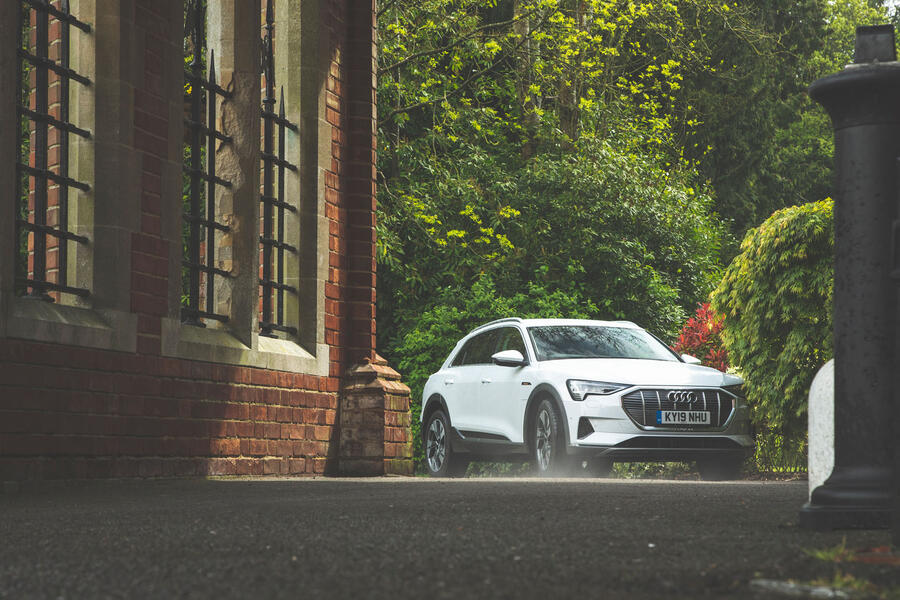
Life with a Audi E-tron: Month 4
Can Audi’s first EV live up to its luxury SUV billing in real-world use? We’ve had 5000 miles to find out - 16th October 2019
Range is a crucial consideration for most drivers of electric vehicles (EVs). The farther you can go between recharges and the less time you have to spend replenishing batteries, the easier it is to live with such a car.
So, given that Audi’s first dedicated EV can’t match its main rivals on that front (as we know from both official tests and our own experience), was it a mistake choosing to run an E-tron, rather than another electric luxury SUV such as a Jaguar I-Pace or a Tesla Model X?
Not in the slightest. Over nearly 5000 miles – unusually heavy use for me – the E-tron not only easily got me everywhere I wanted to go, serving as my only car, but it also proved to be one of the most refined, comfortable cars I’ve driven. In the wider context of its ability to deliver all the trappings of luxury, the E-tron is up there with the best, thanks to its exceptionally low noise levels and incredibly cosseting ride, as well as its super-smooth electric powertrain.
I found that the E-tron could cover up to 220 miles on a full charge, which is on a par with the range from our road test, although it was rare that I depleted the battery that much before topping it up. That was sufficient to tackle long trips, even back to back, without fear, although a range of 300 miles would still have been welcome, simply to reduce the time spent faffing around at public charging sites.
Recharging times varied greatly, depending on what the E-tron was plugged into. It could be topped up really quickly (30-80% in about 15 minutes) via a high-power, 350kW charger from the Ionity network, but they’re thin on the ground at the moment. However, it was painfully slow when connected to my 3kW wallbox at home, requiring around 28 hours to go from nearly empty to full. Even Ecotricity’s 50kW rapid chargers, found at most motorway service areas, seemed barely adequate for such a big battery.
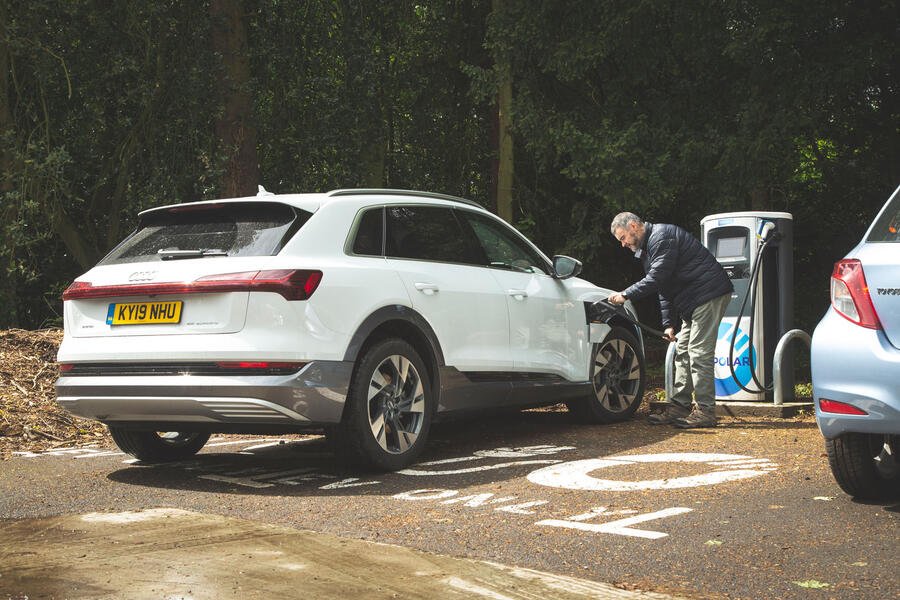
As with most EVs, the E-tron’s seamless power delivery and absence of engine noise made virtually all conventionally powered cars seem clunky and uncouth. But while it had plenty of performance and was untroubled doing high speeds on the motorway, it rarely felt as lively or downright rapid as the Jaguar I-Pace and most Teslas. In part, that’s down to the lardy 2.5-tonne kerb weight, the influence of which could always be felt on the move, especially in corners.
I’d also have liked a stronger level of regenerative braking under deceleration, because it wasn’t really possible to drive the E-tron without using the brake pedal to come to a halt (as you can in, say, a Nissan Leaf), even in its highest regen setting.
That mass took its toll on efficiency, too. Energy consumption averaged just 2.3 miles/kWh, and I never saw anything higher than 2.9 miles/kWh, achieved in slow but steady motorway traffic. I didn’t expect it to match the four to five miles/kWh that drivers of smaller EV such as the Leaf and Kia e-Niro can expect, but the E-tron’s efficiency was still disappointing, being worse than that of most of its direct rivals.
Even so, the E-tron was relatively cheap to run, costing around £13 for a full recharge at home and consuming £300 worth of electricity over four months, and I always felt less guilty than usual about driving such a large, heavy car, knowing that it wasn’t emitting anything harmful.
Some might wish for a more adventurous approach, but I couldn’t fault the E-tron’s interior for material quality, space or functionality. The seating position was ideal – nicely elevated but not so high as to make getting in and out awkward – and the big boot proved very practical, even if space isn’t as well utilised as it is in the I-Pace and Model X. I even liked the sharp-looking, responsive twin touchscreens for the infotainment and climate control; it’s really quick and easy to tap through levels to get to regularly accessed areas such as the charging screen, for example. Adjusting the temperature on the move via the lower screen could be tricky, but I used the effective voice control system instead for such tasks.
The only things I might reconsider if I were to spec up another E-tron would be the seats (the standard ones, although comfortable, are flat and thinly padded, so I’d look at the £650 sports seats instead) and the door mirrors; I’d have the £1250 ‘virtual’ cameras instead, if only because they improve aerodynamics and therefore range.
Very few things about the E-tron actively annoyed me – always a sign of a car that I’d be happy to live with for a long time – and most of the electronic driver aids worked flawlessly without being intrusive. The exception was the lane-keeping assistance, which tended to let the car wander too much on the motorway before intervening but then interfered far too much on country roads.
The E-tron developed faults with its adaptive cruise control and emergency call function during its time with us, raising a question mark over the long-term reliability of such a complex car, although the issues could have been teething problems on our early example. The car was also due to be recalled to fix a faulty component in the charging system that posed a potential fire risk.
The Audi may not be a Tesla beater, then, but that doesn’t mean it’s a let-down; far from it. While there’s plenty of scope for improvement, especially in the areas of weight and range, the E-tron did exactly what was asked of it, pampering its occupants even more than most other luxury SUVs and proving well rounded enough to cover trips of virtually any distance without undue concerns, other than the time it can take to recharge the battery until the infrastructure catches up with the car’s capabilities. It won’t work for everyone, but whichever way you look at it, the E-tron is a fine first effort.
Second Opinion
The guilt I felt in ranking Allan’s Audi last in our electric SUV test troubled me. This is a world-class luxury car, and stood out as such even next to the toughest rivals. I love the way it coasts with the battery regen backed right off – as if it would run forever in perpetual motion.
Matt Saunders
Love it:
Ride comfort On its air suspension, the E-tron is cosseting and composed, with little head shake on uneven roads.
Low noise levels It’s quieter than any rival, with only gentle wind and road noise at high speeds – and no engine noise.
Interior Understated, with top-notch materials, a great driving position and loads of space.
Loathe it:
Charging port location ’d prefer ports at the rear, where Tesla puts them; getting a cable to reach a front wing can be a stretch.
Excessive weight Feels heavy even by EV standards; a 2.5-tonne mass does performance and efficiency no favours.
Final mileage: 4969
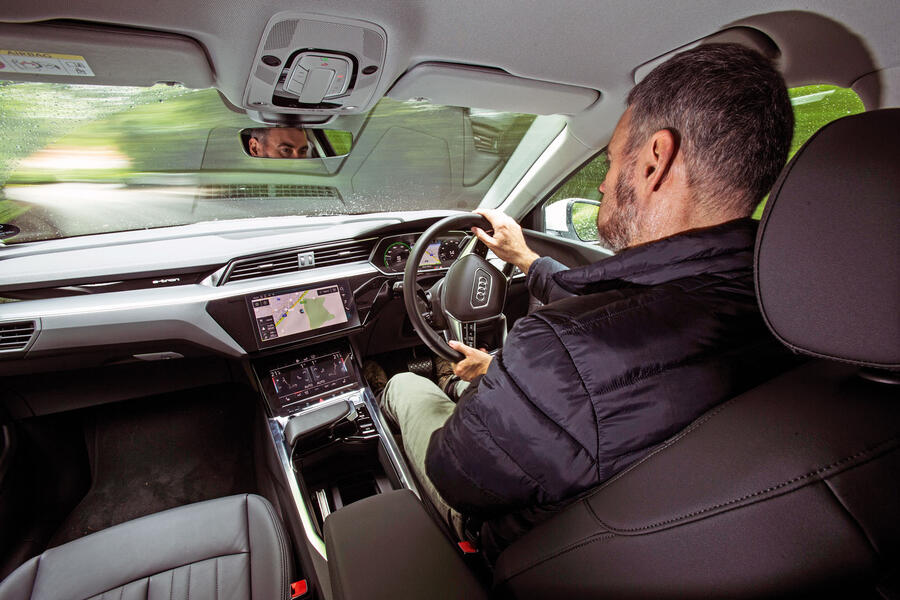
Absence makes the heart grow fonder – and patience wear thin - 2nd October 2019
The adaptive cruise control (ACC) on our E-tron – a feature I value for its ability to adjust the car’s speed automatically in all sorts of situations, from congested motorways and average speed zones to slip roads and roundabouts – has been permanently out of action for quite a few weeks now.
Keen to get it working again, I booked the car in for a check-up at the Audi dealership in Walton-on-Thames, Surrey. I had to wait for around three weeks for a slot, but the car was picked up from my home address on the allotted morning and was meant to be returned later the same day. However, that didn’t quite go according to plan.
You see, it turned out that the E-tron needed a new ACC control module, but the component was on back order, which meant a potential delay of several weeks before the fault could be fixed. While they had the car, Walton Audi carried out some other scheduled software updates and returned it, as planned, while we decided what to do about the ACC.
However, an alarming number of fault warnings – everything from a loose wheel to problems with the suspension, four-wheel-drive system and stability control – started pinging up on the instrument panel when I went to move the car, so I immediately called the dealer and they took the car back that same evening. The warnings kept coming back intermittently and apparently couldn’t be erased permanently with the faulty ACC control module still in place.
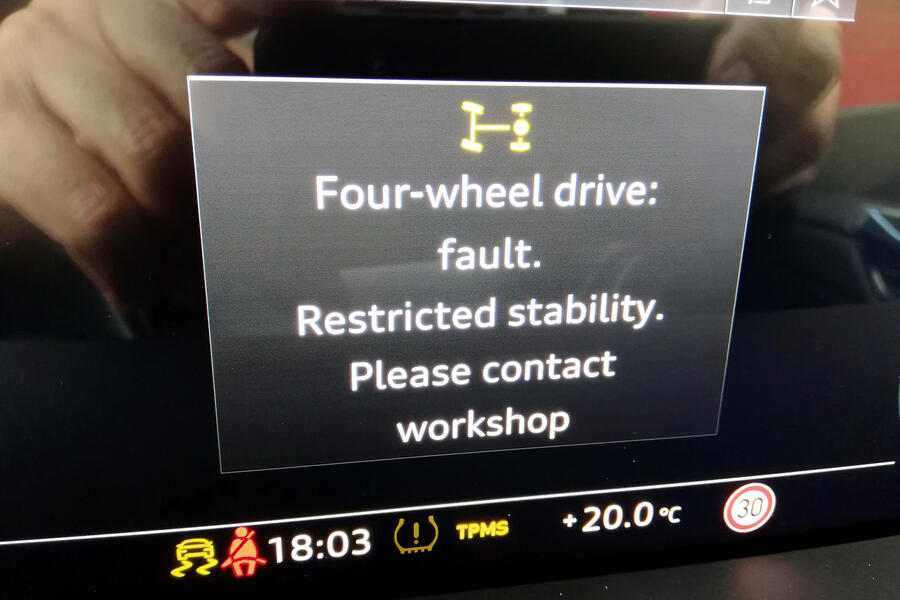
In the end, Audi UK came to the rescue with a new module, and I got the car back four days later with all of the issues sorted – under warranty, as you’d expect. I couldn’t fault Walton Audi’s efforts – they were excellent to deal with, providing me with regular updates by phone and email about the status of ‘my’ E-tron and giving me a car to drive while mine was with them – but the episode did serve to highlight the potential dramas involved in maintaining such a complex car. Hopefully it’s just teething problems on our very early example of the E-tron.
Those four days of E-tron deprivation made me realise just how much I prefer driving EVs these days – especially one as comfortable and refined as the big Audi. While I’ll never turn down a chance to drive something particularly exciting, such as a Porsche 911 GT3, most conventionally powered cars feel like dinosaurs in comparison with the E-tron.
Although the E-tron is one of the quietest cars we’ve ever tested at 30mph and 70mph, it isn’t silent, of course. Even with our car’s acoustic side glass fitted, you’ll still hear some wind and road noise at high speeds, and I’ve noticed that its electric motors make more of a whine under acceleration and deceleration than those of many of the other EVs I’ve driven; by all accounts, the new Mercedes-Benz EQC is even quieter.
Nevertheless, you have to look to the likes of the far more expensive Rolls-Royce Phantom to find a conventionally powered car that generates less noise on the move than the E-tron. Between its refinement and its exemplary ride comfort, the E-tron is right up there with the very best in terms of luxury.
Love it:
Seating position The seats are elevated to the ideal height for sliding in and out with ease, but not so high that you feel like you need the assistance of a stepladder.
Loathe it:
Weight Even in comparison with other luxury SUVs such as the Volvo XC90, the E-tron feels heavy on the move. And it is, weighing in at more than 2.5 tonnes.
Mileage: 4350
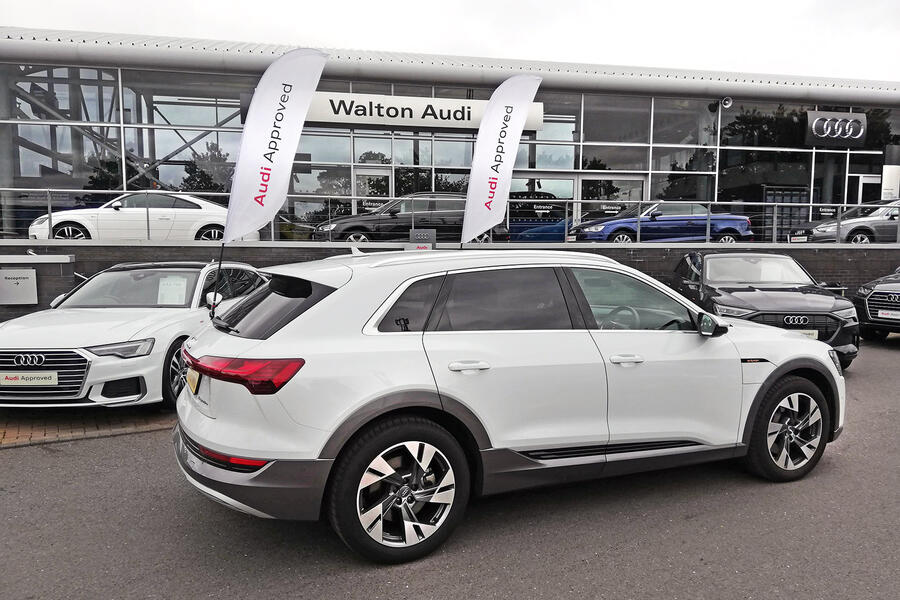
Life with an Audi E-tron: Month 3
Audi giveth, and Audi taketh away - 11th September 2019
The way the charging port flaps motor open and close is pleasing, but the ports’ location, between the front wheel arches and doors, is less so. It means I’m forced to park nose in when recharging (I’d prefer to reverse) but also the chunky tethered cables at public sites often barely reach the port. Charging ports on Teslas, on the nearside rear corner, seem more convenient.
Mileage: 4350
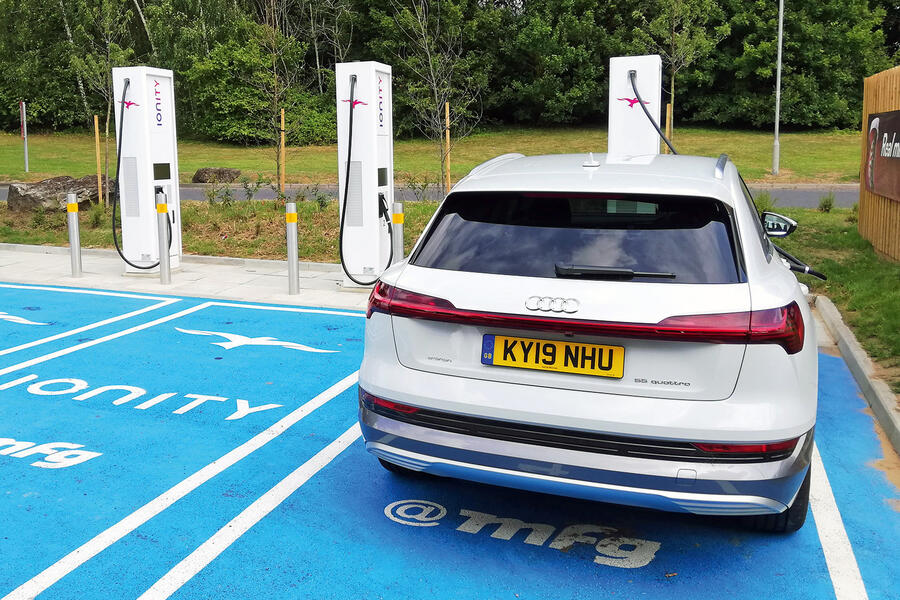
Never mind this ‘three-car garage’ at Caffeine & Machine, let’s stretch the E-tron’s legs - 4 September 2019
The E-tron’s range hasn’t been much of a concern for me so far because 220-odd miles is actually plenty for my needs, although it could always be better. More of an issue is the time it takes to recharge the 95kWh battery pack, especially at home.
Given that hooking it up to my 3kW wallbox for 12 hours adds only about 50% to the battery capacity and just over 100 miles of range, I wasn’t sure how well the car would cope with doing back-to-back long trips. Could I get it recharged quickly enough to give me a decent range for the next day’s journey? To find out, I spent the best part of an entire week doing a series of day trips around the south of England, mostly to go cycling, covering almost exactly 1000 miles in the E-tron in the process.
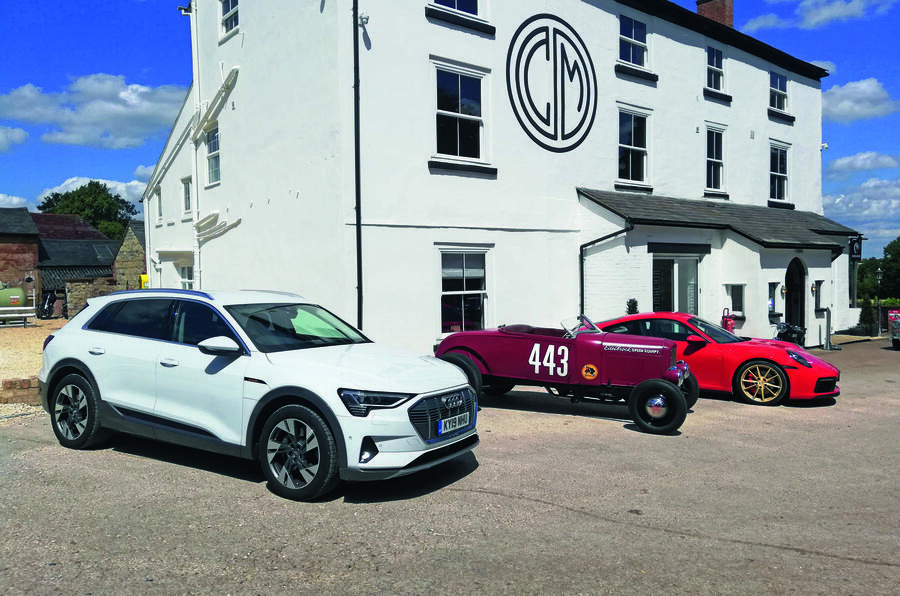
Although some of those trips could have been completed on a single charge, I erred on the side of caution and built in a few top-ups at public rapid chargers, because I wanted to avoid returning home with a heavily depleted battery and not being able to get back to 100% by the next morning. My plan backfired to a certain extent, because on two consecutive days, I forgot to reset the charging target to 100% (you can specify when recharging stops via the infotainment system) and had only 80% one day and 50% the next. However, that didn’t deter me. I simply had to stop earlier than planned for another top-up.
But as I said, it still takes time to replenish a battery as large as the E-tron’s. Top-ups from about 35% to 80% took 45-50 minutes via Ecotricity 50kW rapid chargers, as you get at most motorway services, and slightly longer at a GeniePoint site at a suburban service station. I got into the habit of taking a book with me to help while away the time. The cost in each case was about £11 or £12.
However, it was a different story when I tried one of the new Ionity 350kW chargers at Maidstone services in Kent. With the E-tron recharging at its maximum rate of 150kW, the speed at which the gauge climbed was glorious to behold. That day I got from 20% to 80% in just 22 minutes – three times faster than most other chargers.
It was also the cheapest of the ones I tried, because Ionity currently charges a flat rate of £8 no matter how much energy you take. The only problem right now is that there are very few such high-power chargers in the UK, but they’re coming, thankfully.
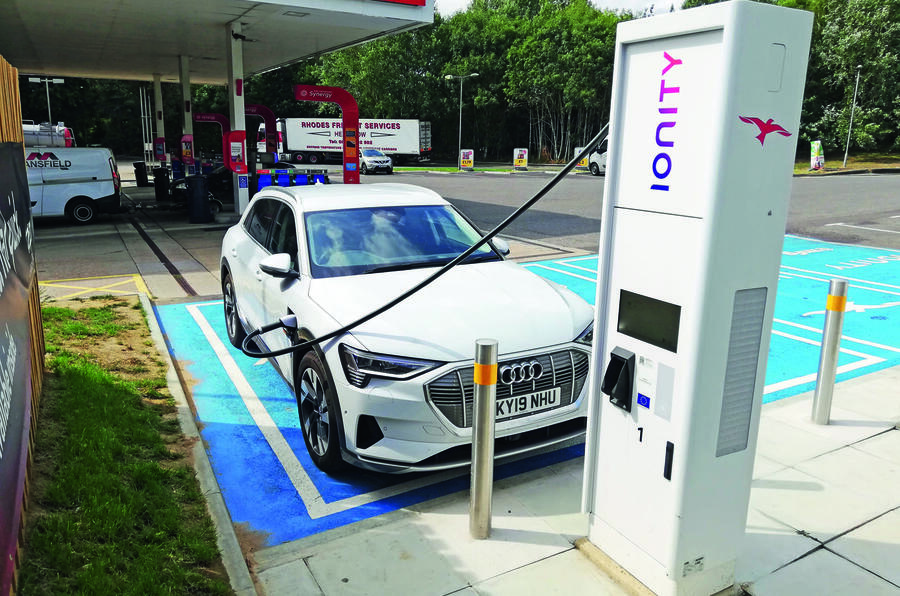
All the while, the E-tron reaffirmed itself as a wonderfully comfortable and refined cruising companion, feeling relaxed and wafty at all times and assured on the motorway. I’d had some doubts about the front seats, which seemed rather flat and thinly padded at first, but they’ve proved perfectly comfortable for a few hours at a time. My bike fits easily into the boot with the rear seatbacks down, too.
In the end, I didn’t find it difficult to cover such distances in the E-tron – although the fact that I wasn’t in any hurry no doubt helped. There are sometimes quite a few variables to deal with – charging points already in use or not working, crucial phone apps misbehaving and so on – and the amount of faffing around can be tedious at times, but I’d undertake a trip of any length in the E-tron with confidence, in the UK, at least.
Love it:
Twin touchscreens Although the central screens can be distracting to use on the move, they’re actually very crisp, responsive and easy to navigate.
Loathe it:
Lane-keeping assistance You have to continually remember to turn off this driver aid on country roads, because it’s highly intrusive. It’s of limited use on the motorway, too.
Mileage: 3848
Can’t go commando at the campsite - 21 August 2019
Under the E-tron’s bonnet sits a ‘commando’ industrial plug that’s interchangeable with the three-pin domestic plug, but I can’t think of any circumstances in which I’d ever use it. The plug looks like the same one you’d use to run power to a caravan at a campsite, but I tried hooking up to one such outlet and it turned out to be the wrong size.
Mileage: 3841
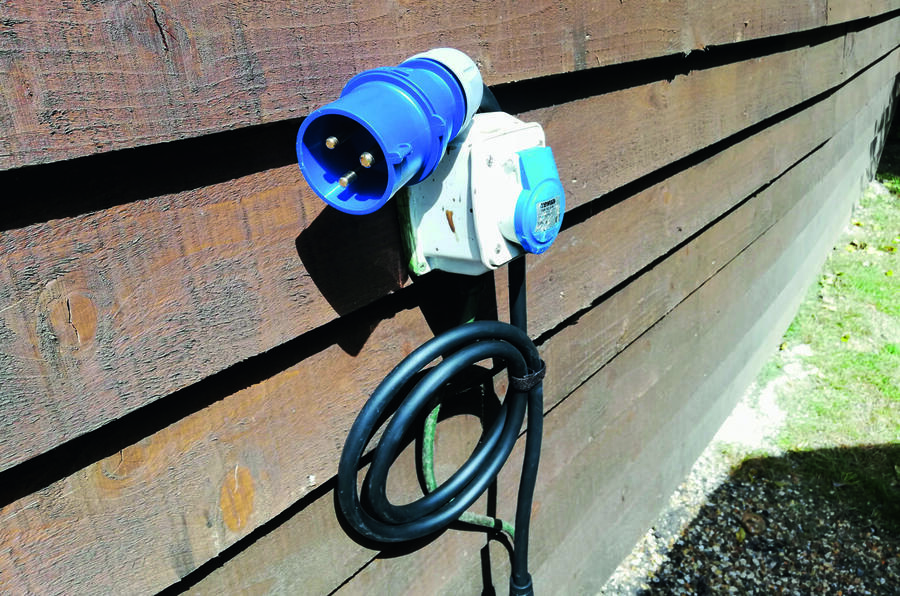
Life with an Audi E-tron: Month 2
Rain reveals a lack of finesse in one particular area - 31st July 2019
Given how gloriously quiet the E-tron is, a fair bit of noise from the windscreen wipers is a surprise. There’s a strip of plastic trim that runs up each side of the windscreen, and the wiper on the driver’s side smacks against it at the top of each sweep. Perhaps the wiper simply needs adjusting, but the rhythmic clack it makes is rather jarring.
Mileage: 2740
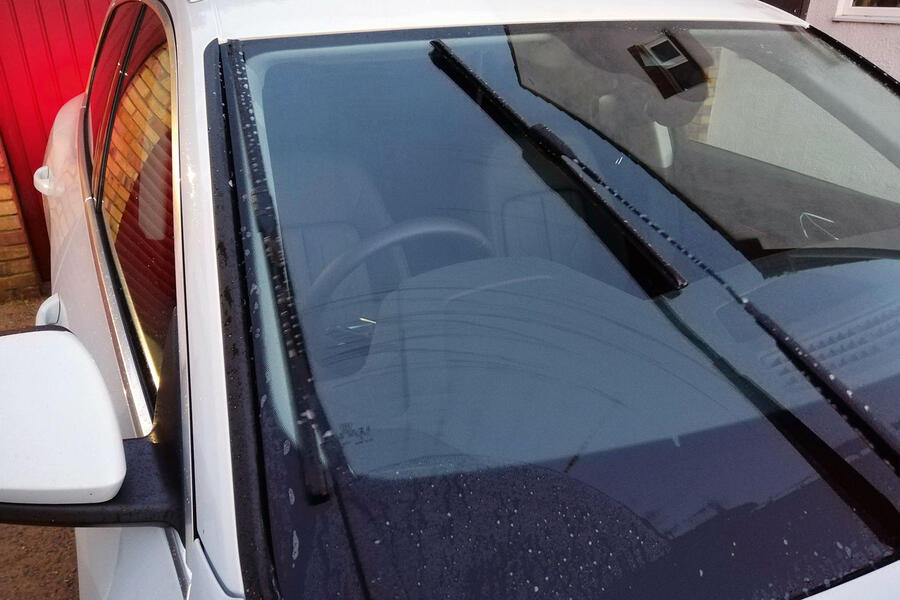
Here comes the ride, ravishing in white… and emissions free, too - 17th July 2019
The Audi E-tron’s limo-like qualities (and its brilliant white paint) made it an obvious choice for wedding car duties when a colleague’s daughter got married at Kew Gardens in south-west London recently – especially as a traditional horse and carriage wouldn’t have mixed very well with the required journey up the M3 motorway.
Come the big day, the bride couldn’t have been happier with her conveyance. The E-tron’s spacious interior coped easily with the sugar plum fairy dress, while the elevated seating position meant the bride made a serene, dignified entrance.
Just as impressively, the E-tron’s excellent refinement ensured the bride’s sister and father could effortlessly maintain a steady stream of reassuring chit-chat and therefore banish any lingering thoughts of a last-minute detour to the airport.
Like all electric vehicles, the E-tron has a regenerative braking system that uses the electric motors and brakes to harvest energy under deceleration and put it back into the battery pack, helping to eke out the range. The level of regen can be adjusted either automatically or manually via paddles behind the steering wheel, ranging from coasting with minimal drag through to strong enough to slow the car significantly when you lift off the accelerator. This can be a boon at times, especially around town, but in the E-tron’s case, it could be stronger.
In some EVs, such as the Nissan Leaf, the regen is so vigorous that you hardly ever have to touch the brake pedal. Audi suggests this is possible in the E-tron too, but I’m finding that even in its highest setting, the regen isn’t strong enough to bring the car to a halt without braking in the traditional manner. This, I assume, is to make the car behave in a way that drivers are used to from their previous non-electric cars, but you lose the benefit of full one-pedal driving in heavy traffic. I’m also finding it tricky to bring the E-tron to a halt without a lurch and creak if the ‘hold assist’ function is activated.

The indicated range has settled at around 220 miles with each full recharge, and it’s proving fairly trustworthy, with discrepancies of only about 10 miles either way between that figure and the distance the car can actually cover on a charge. And unlike in some smaller EVs, it doesn’t go into freefall at motorway speeds; the descent remains fairly linear. That’s been plenty for my needs so far, but sterner tests of its range – and more pertinently, its recharging times – are still to come.
On occasion, I’ve deliberately run the battery pack down to virtually empty, just to see how the car would respond. With 30 miles of indicated range remaining, a yellow battery symbol glows permanently in the digital instrument panel, accompanied by offers to find a convenient charging point. With just 10 miles’ range left, the battery symbol starts alternating with a little yellow tortoise symbol – a cute touch – and the car begins to cap power.
I got as low as two miles to go before I lost my nerve, at which point the power had been reduced to 25%, although the car still felt surprisingly perky, at town speeds at least.
Following the fault we encountered early on with the emergency call function, the adaptive cruise control – part of the £1950 Tour Pack option – has now made itself permanently unavailable for use. It was working well at first; in fact, its ability to adjust the car’s speed correctly, not just on congested motorways but also through speed limit changes and on dual-carriageway roundabouts and motorway slip roads, was quite mesmerising. I’ve cleaned the radar unit in the front bumper and other sensors, because often it’s just grime that causes a temporary outage, but the cruise control is still refusing to work. I’m still waiting to hear how that might be rectified.
Love it:
Zero emissions It’s good for my environmental conscience to know that, although I’m driving a massive luxury SUV, it emits precisely nothing.
Loathe it:
Home charging A full recharge takes a tedious 28 hours to full via my weedy 3kW wall box. I foresee a need for stops at motorway rapid chargers…
Mileage: 2455
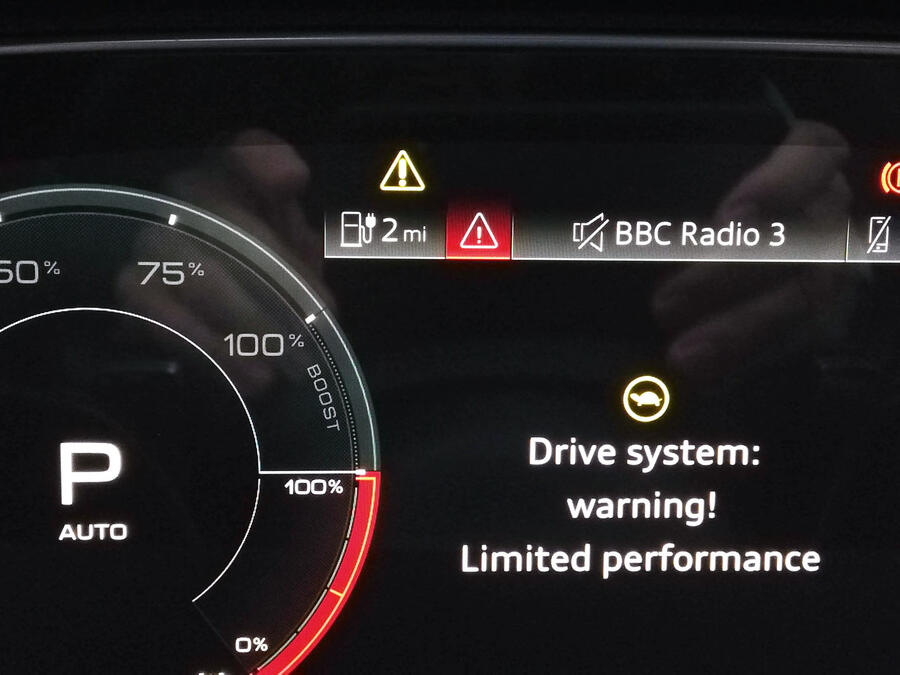
Life with an Audi E-tron: Month 1
An unexpected error message so soon - 26th June 2019
A week or so after the E-tron arrived, a warning message popped up saying there was a fault with the emergency call system, which sends for help if you have an accident. The car spent a couple of days in an Audi workshop while the fault was resolved (via a software update) free of charge. Online forums suggest other Audi models have had similar glitches.
Mileage: 2170
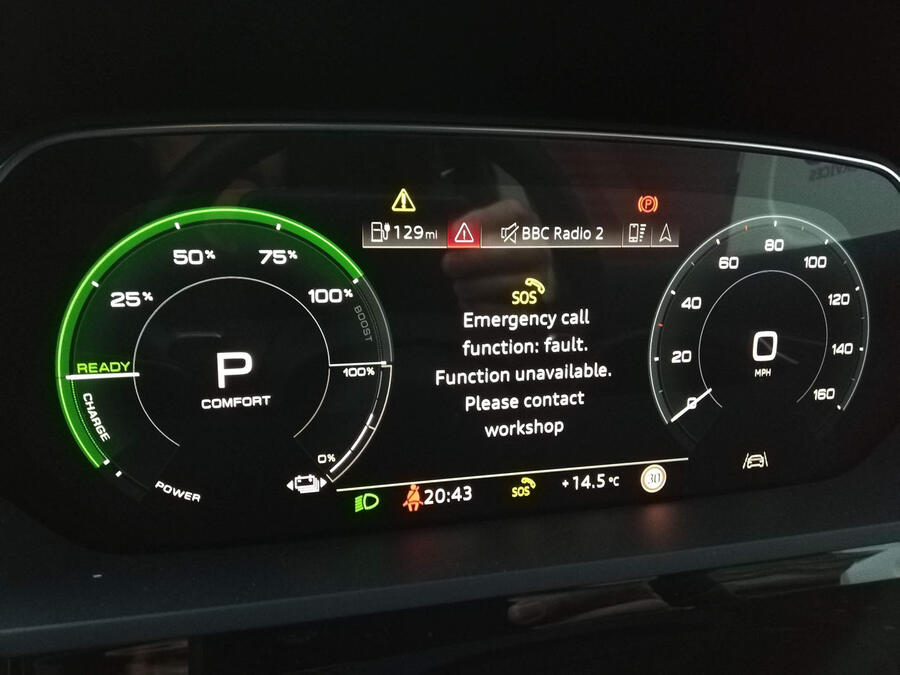
Luxurious EV has less range than rivals. Will that matter in daily use? We intend to see - 19th June 2019
The puzzled looks on the faces of passers-by are already a common sight. What they can see is yet another big Audi SUV. But what they can hear is… virtually nothing.
The usual clamour of an internal combustion engine – often diesel – is conspicuous by its absence as this imposing SUV glides past, and people notice, around town at least. As Audi’s first fully electric vehicle, the Audi E-tron is at once reassuringly familiar and quite different from any previous model by the German brand.
Audi’s inaugural foray into the fast-growing EV market takes the form of a £70,000-plus luxury SUV to take on the Jaguar I-Pace and Tesla Model X, as well as the just-launched Mercedes-Benz EQC.
At 4.9m long, it’s closer in size to the Audi Q7 than the Audi Q5 and in fact shares some of its underpinnings with the Q7, including standard adaptive air suspension, although it’s lower and sleeker than both and is a five-seater only.
Two electric motors – one on each axle to give four-wheel drive – produce solid peaks of 402bhp and 490lb ft of torque, giving the E-tron forceful, Bentley-like performance (0-62mph in 5.7sec), despite the fact that the car weighs two and a half tonnes. The motors receive energy from a 95kWh battery pack that yields an official WLTP range of 241 miles. Considering the size of the battery pack, that’s a little underwhelming in comparison with the EQC’s 259 miles, the I-Pace’s 292 miles and the recently updated Model X Long Range’s 315 miles.
Autocar sibling magazine What Car? has already put the E-tron through its Real Range test and discovered that it can cover 196 miles between charges in real-world driving. That’s not bad, and I’m confident that I can improve on that figure by 20 or 30 miles. But it still means the E-tron is unlikely to go as far on a charge as any of its rivals, or indeed the smaller and much cheaper Kia e-Niro.
Recharging the battery pack isn’t a quick job, either, despite the fact that the E-tron can handle a charging rate of up to 150kW – one of the fastest of the current EVs on the market. A 0-80% recharge using a 50kW rapid charger – now readily available at most motorway services – will take about 90 minutes, and a 7kW home wallbox will do the job in 14 hours.
Best-case scenario is a 30-minute wait if I use one of the latest high-power public chargers, although they’re still few and far between in the UK, while the other extreme is more than 30 hours for a full top-up if I plug in at home, via a three-pin plug or the weedy 3kW wallbox (all I was allowed) that I had installed in my garage last year. Those times will come down, of course, if I plug the car in for a top-up well before the battery pack is fully depleted.
The E-tron is the only EV I’ve come across so far to have two charging ports: Type 2 seven-pin sockets on both sides and a European-standard CCS port for DC rapid charging on the driver’s side. That should make things easier at awkwardly located or busy charging stations. And the way the flaps motor down at the touch of a button and close automatically when you remove the charging cable is, I must admit, very swish, emphasising the quality of this car.
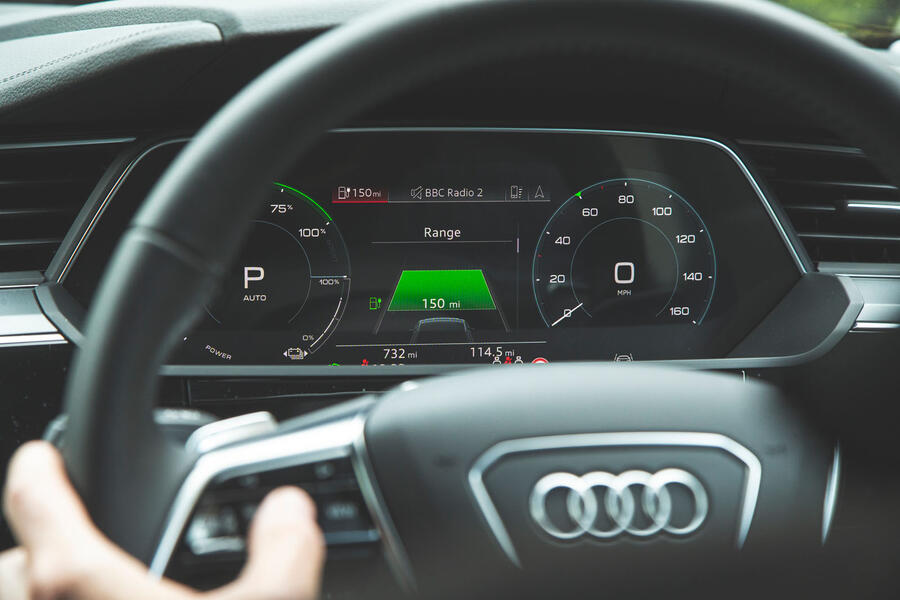
My E-tron isn’t the fully loaded Launch Edition, but even the regular one is classy and luxurious inside, with a configurable digital instrument panel and a pair of sharp, responsive, central touchscreens for the infotainment and secondary functions such as the climate control.
Although the interior is very high-tech, it’s remarkably close to what you’d find in any other recent high-end Audi, so there’s nothing too intimidating about it. Having said that, I haven’t seen a gear selector like the E-tron’s before. It’s a smooth, flat slab of metal that you operate with your fingertips and thumb.
Surprisingly, you have to add the £1950 Tour Pack (which we’ve done) to get extra driver aids such as adaptive cruise control, lane-keeping assistance, traffic sign recognition and other collision avoidance systems. Our car has conventional door mirrors rather than the optional camera-based alternatives (sadly) and differs slightly from UK spec in that it has, as individual options, an advanced key for high-security keyless entry (normally part of the £1895 Comfort and Sound Pack) and super-clear Audi Beam LED puddle lights (otherwise available on the Launch Edition only).
Despite the question mark over its efficiency, the E-tron is such an interesting and significant car that I consider myself lucky to be running one. I can already say with confidence that it’s one of the smoothest, quietest and plushest-riding cars I’ve driven, aided by the optional double-glazed side windows we’ve got on our car.
And If I’m going to run a luxury SUV, I’m glad it’s an electric one that doesn’t put out any CO2 or pollutants and will save me a fortune in fuel bills. The fact that the E-tron seemingly won’t go as far on a charge as its rivals might not matter when all of its other qualities are taken into account. This isn’t just any electric car, after all. It’s an electric Audi.
Second Opinion
After a succession of EVs that have been deliberately different and all too keen to shout about being battery powered, the E-tron is refreshingly normal. It’s a luxury car first and an electric one second, fitting right in with the rest of Audi’s range – but, given the price, it’ll be interesting to see if this subtlety is so endearing at the end the test.
Tom Morgan
Audi E-tron 55 quattro prices and specification
Prices: List price new £68,020 (after £3500 government grant) List price now £68,060 Price as tested £74,725 Dealer value now £63,760 Private value now £60,010 Trade value now £57,125 (part exchange)
Options:Tour Pack (£1950), Advanced Key (£850), fourzone deluxe automatic climate control (£825), Glacier White metallic paint (£750), acoustic side window glazing (£525), rear side airbags and illuminated seatbelt buckles (£475), privacy glass (£475), aluminium roof rails (£425), Audi Music Interface, rear (£175), Audi Beam (£150), Storage and Luggage Pack (£125)
Fuel consumption and range: Official range 237 miles Test range 220 miles Test best 2.9 miles/kWh Test average 2.3 miles /kWh
Tech highlights: 0-62mph 5.7sec (boost mode) Top speed 124mph Engine Twin electric motors Max power 402bhp (boost mode) Max torque 490lb ft (boost mode) Transmission single-speed automatic Battery capacity 95kWh Boot capacity 660-1725 litres Wheels 9.0Jx20in, alloy Tyres 255/50 R20 Bridgestone Alenza 001 Kerb weight 2565kg
Service and running costs: Contract hire rate £644 CO2 0g/km Service costs None Other costs None Electricity costs £300 Running costs inc electricity £300 Cost per mile 6.9 pence Depreciation £4260 Cost per mile inc dep’n £1.05 Faults Adaptive cruise control stopped working, emergency call function warning message

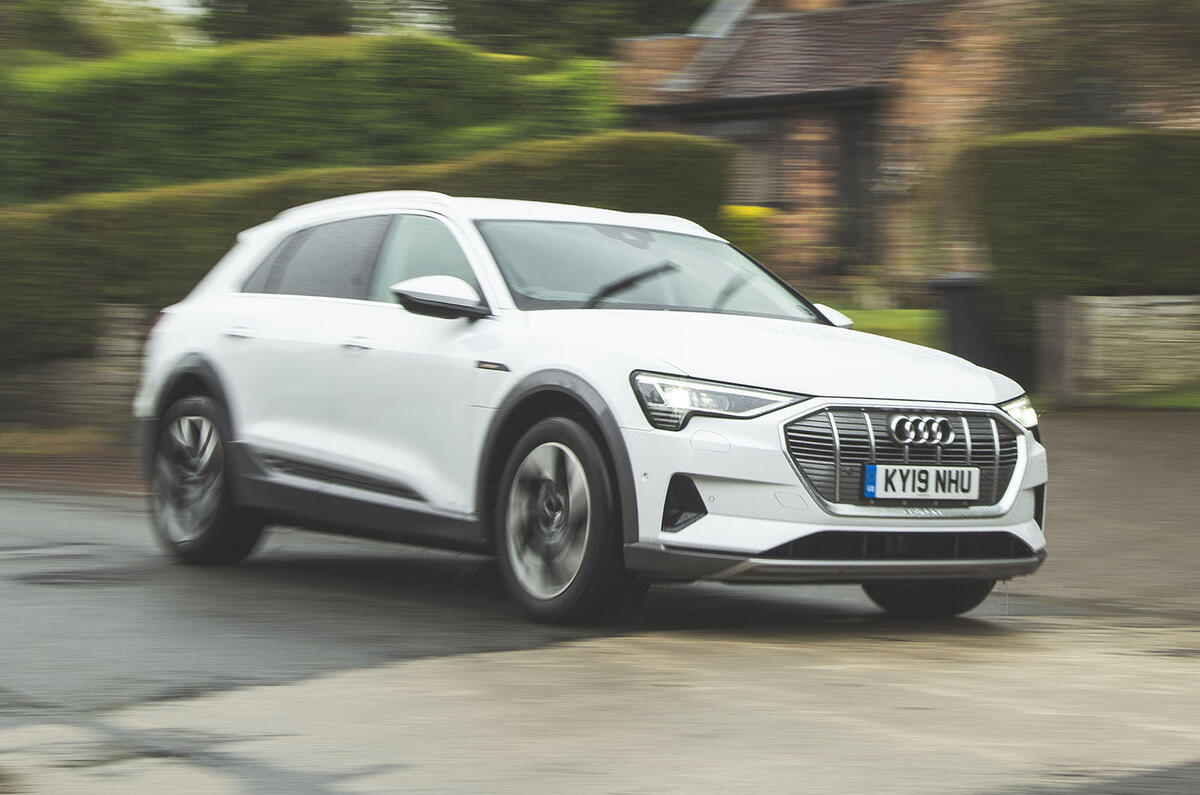
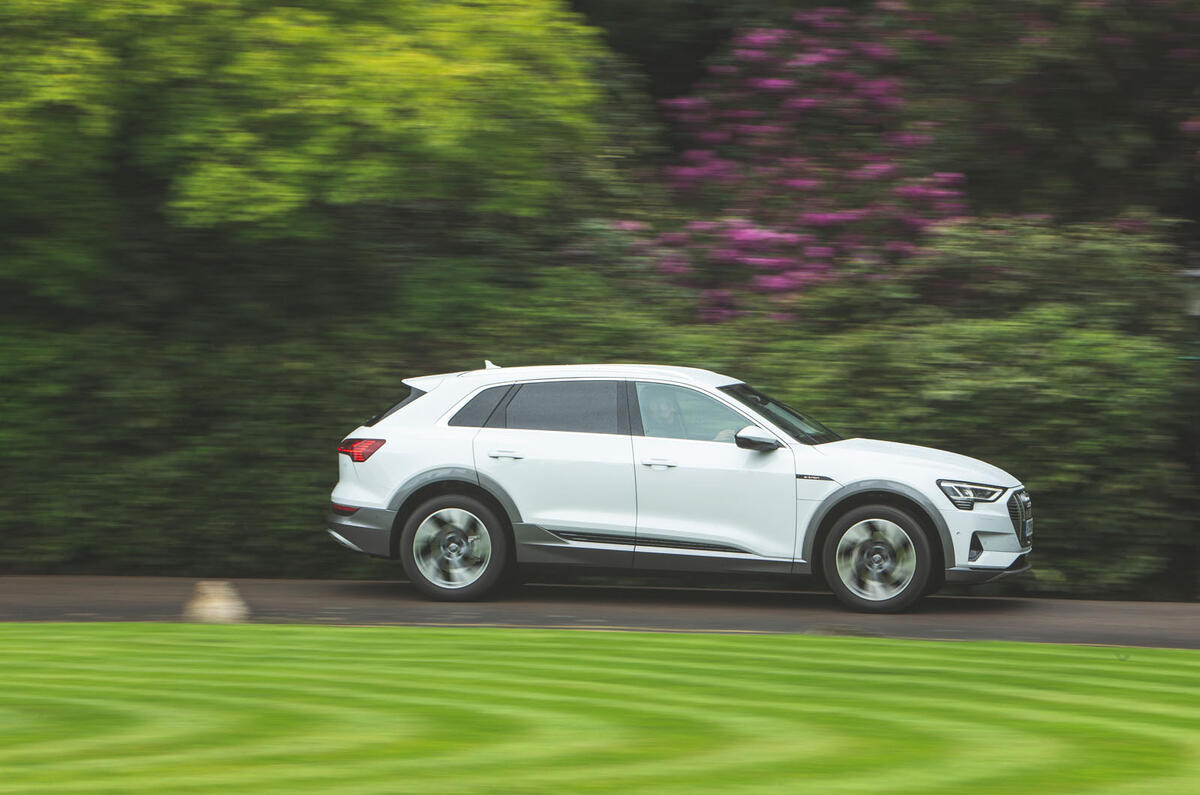
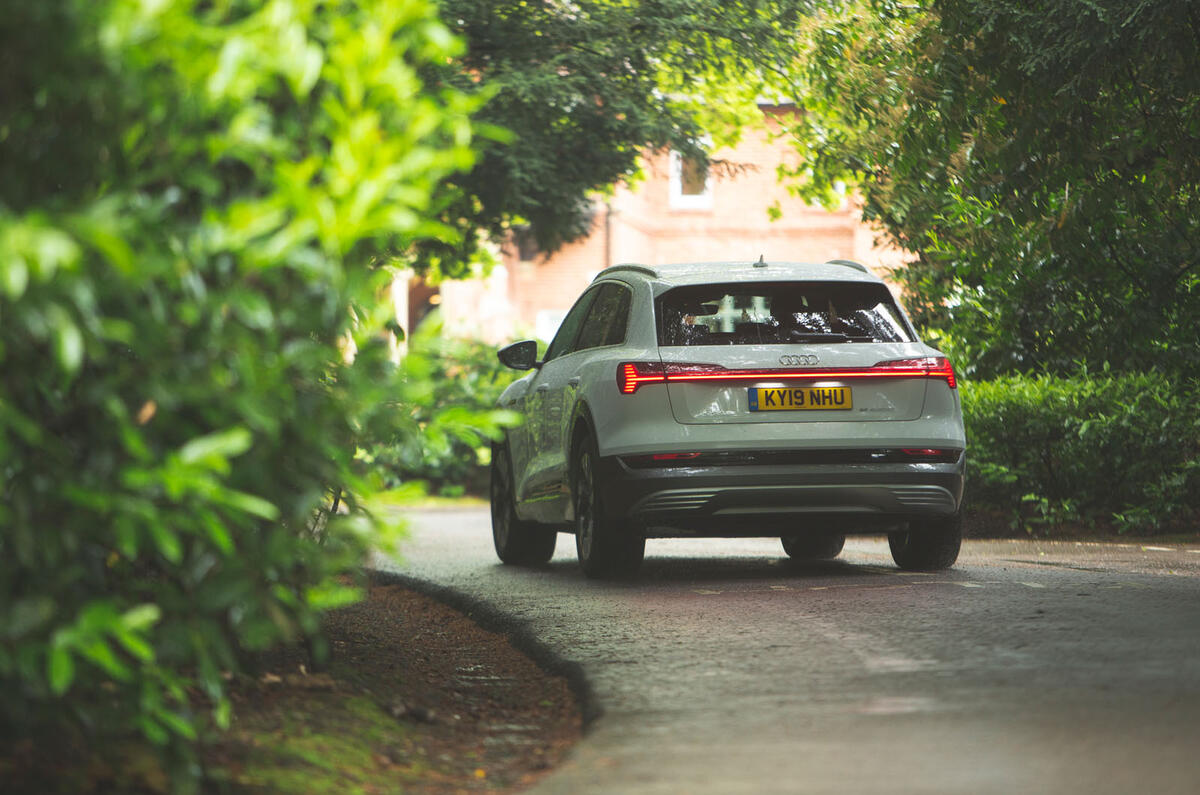
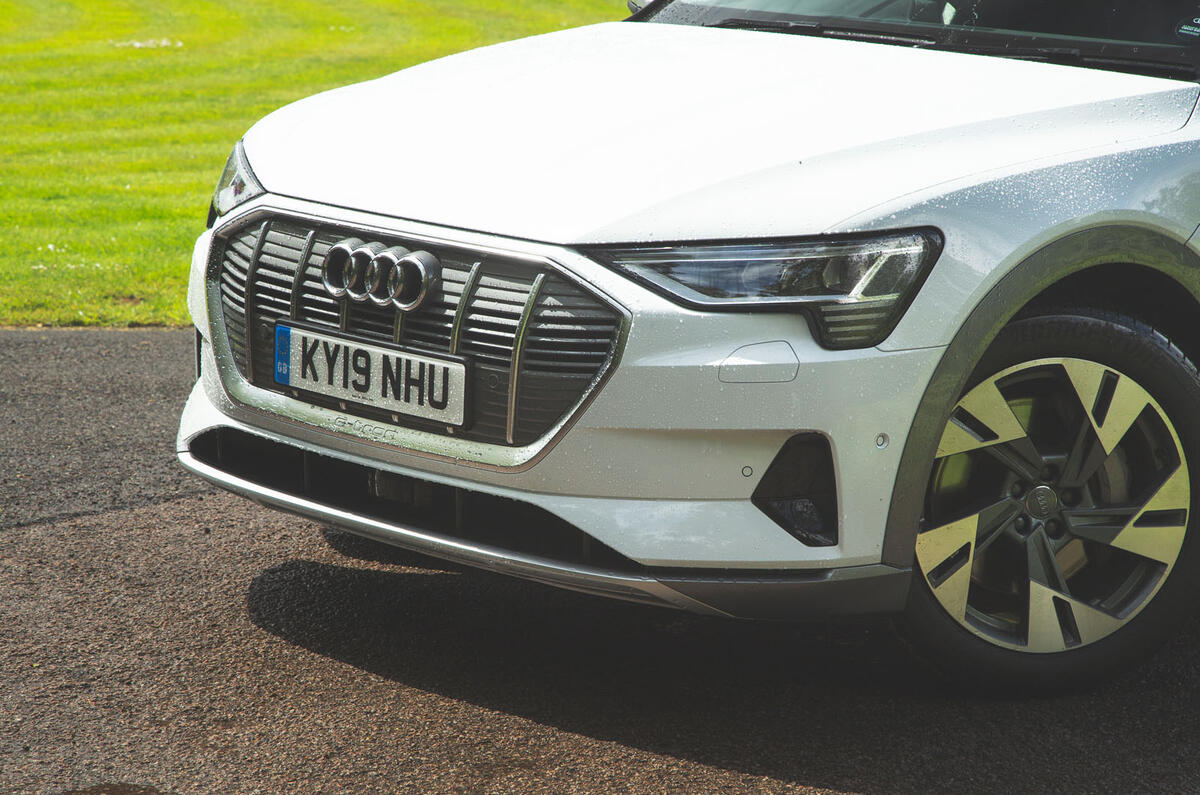
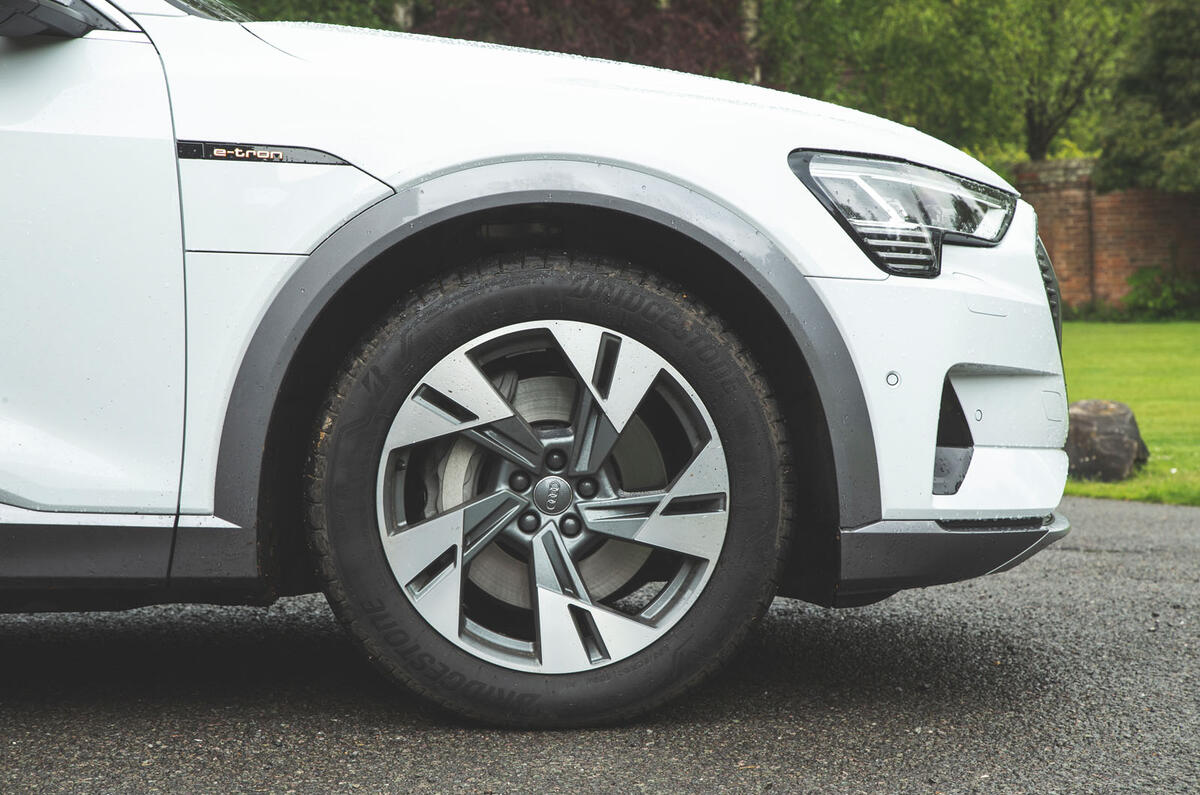
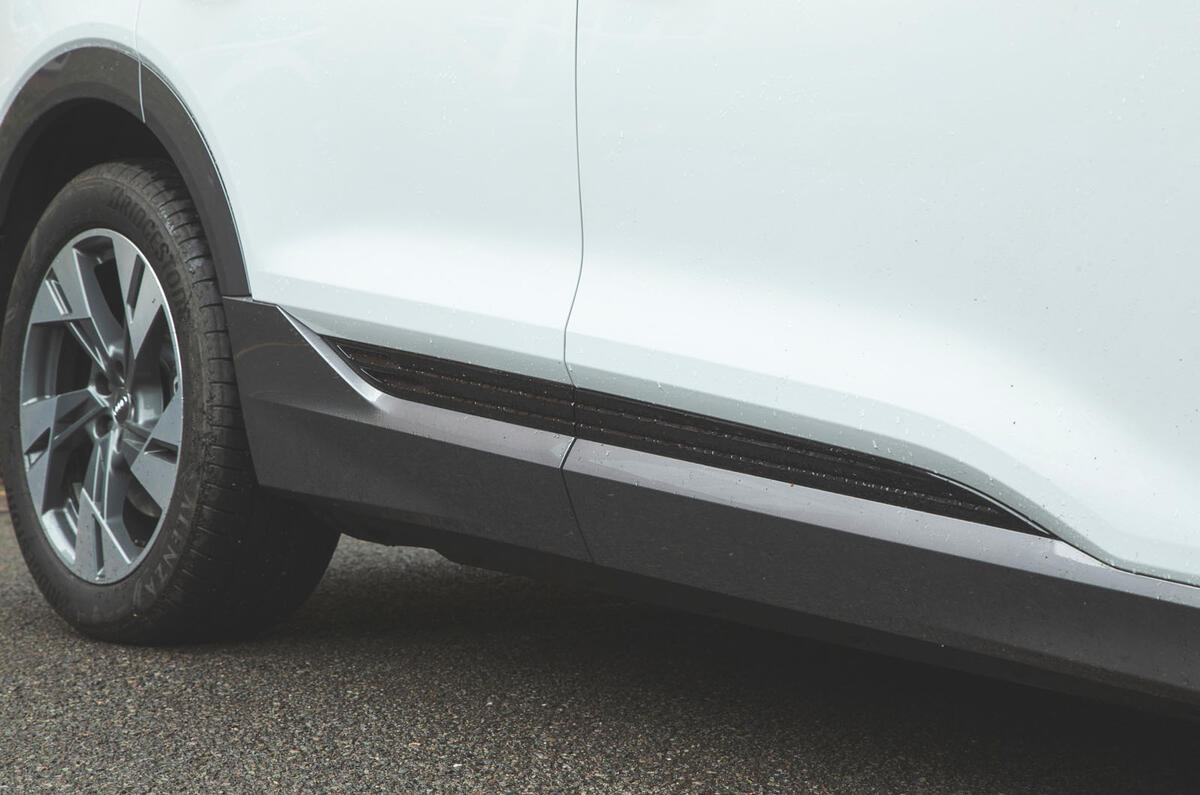
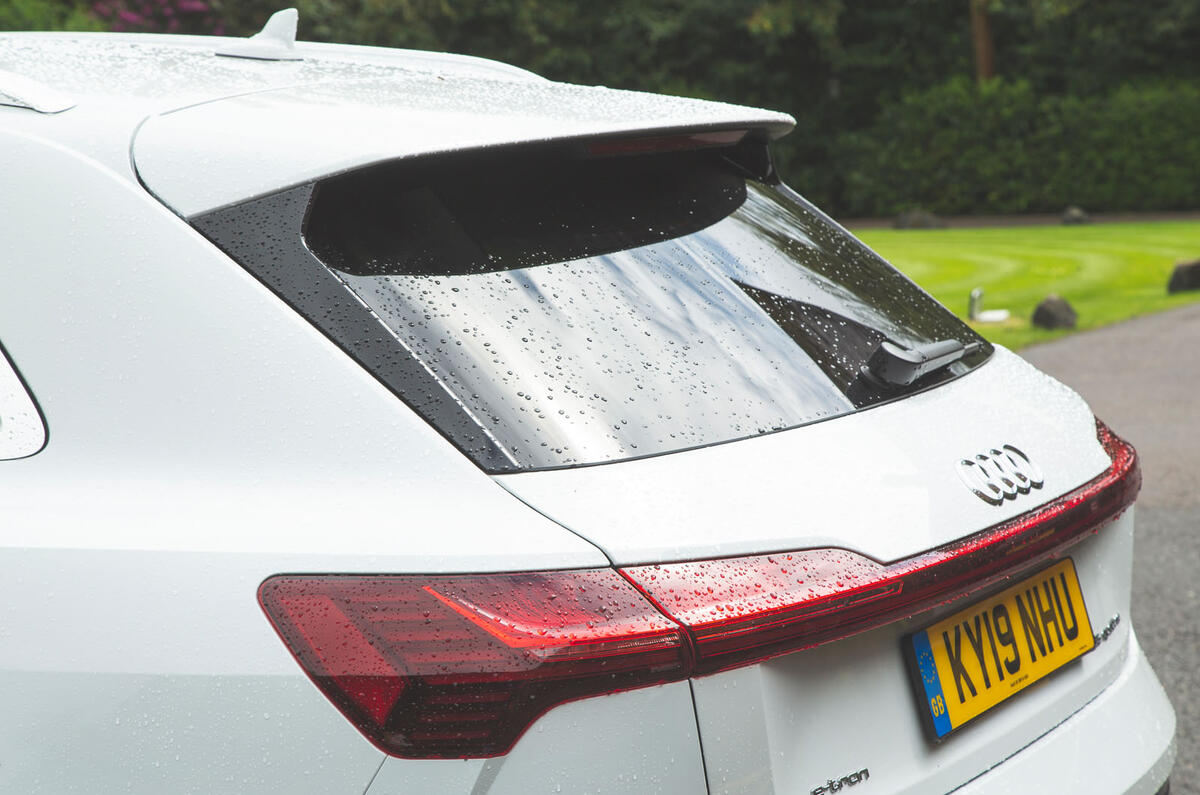

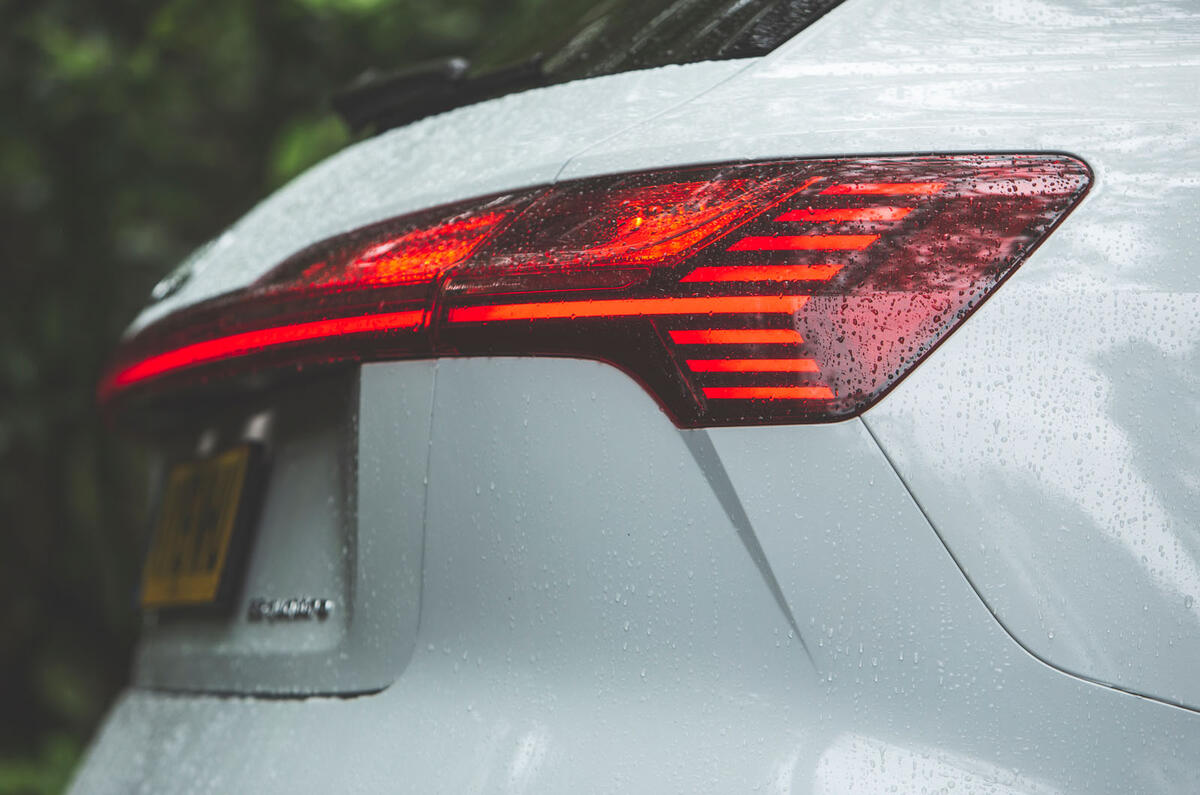
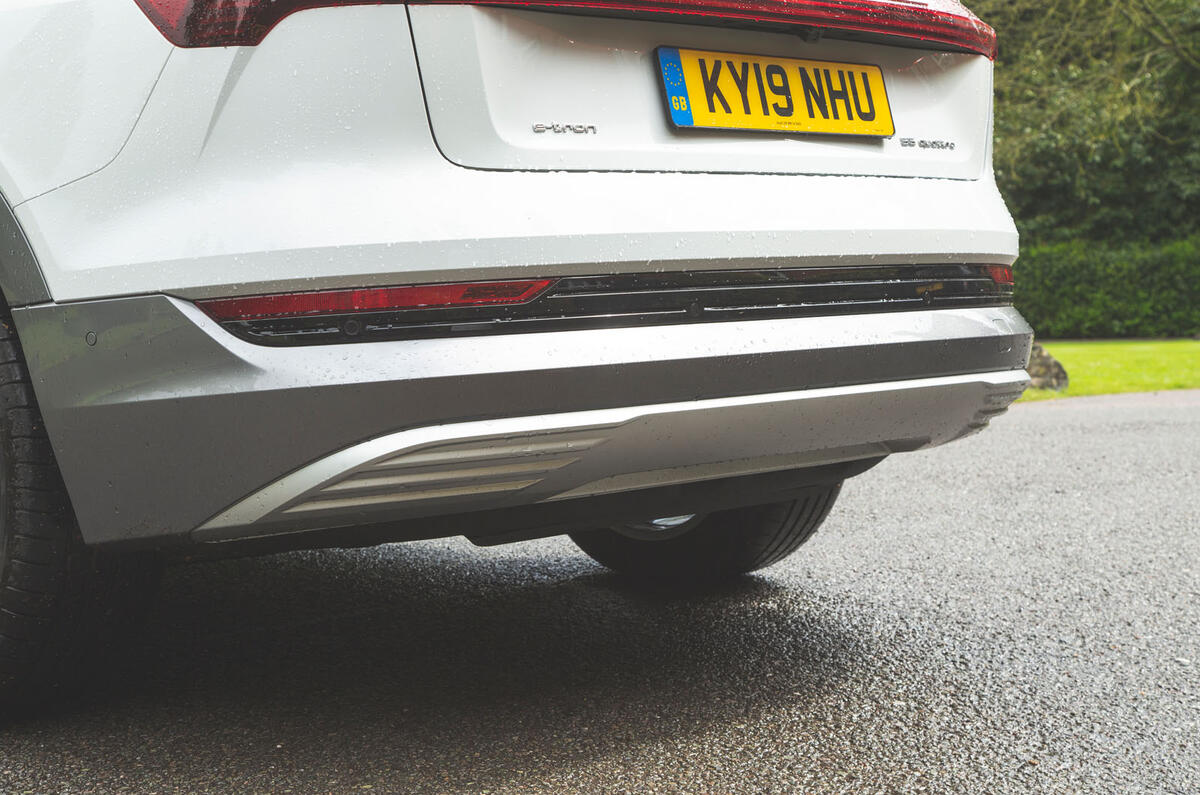
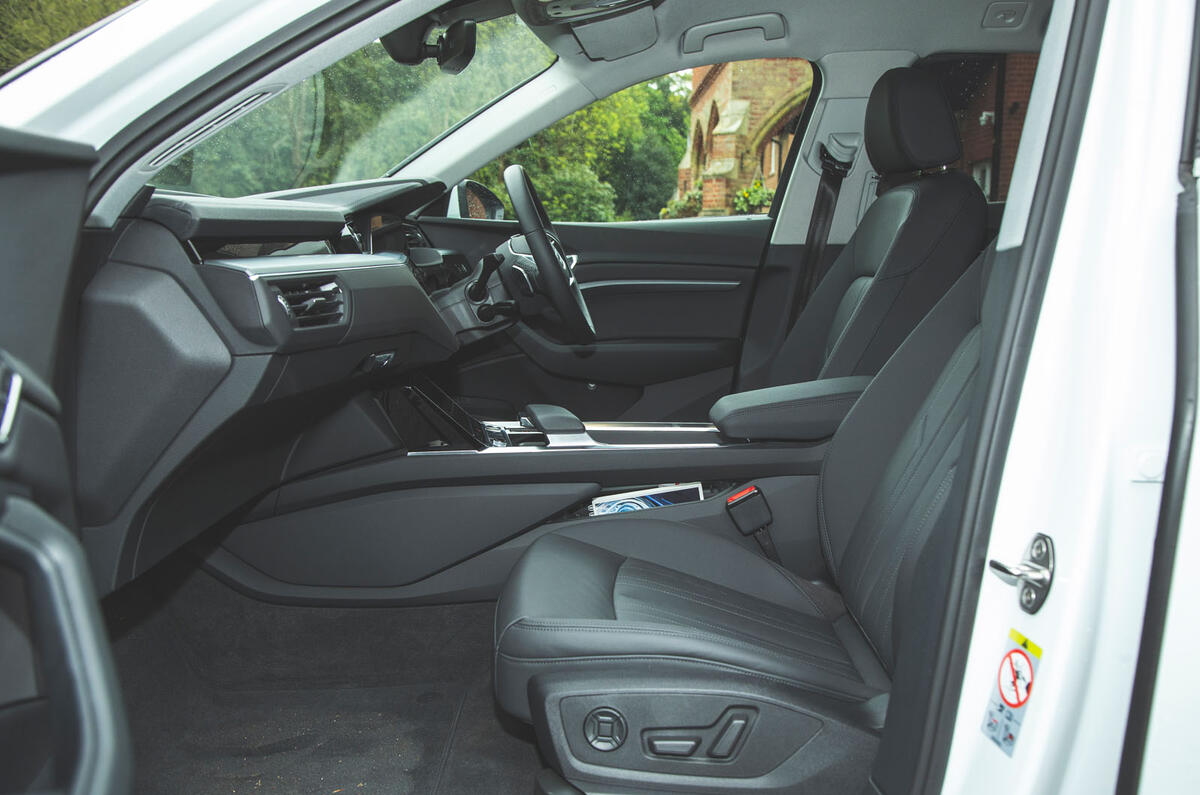
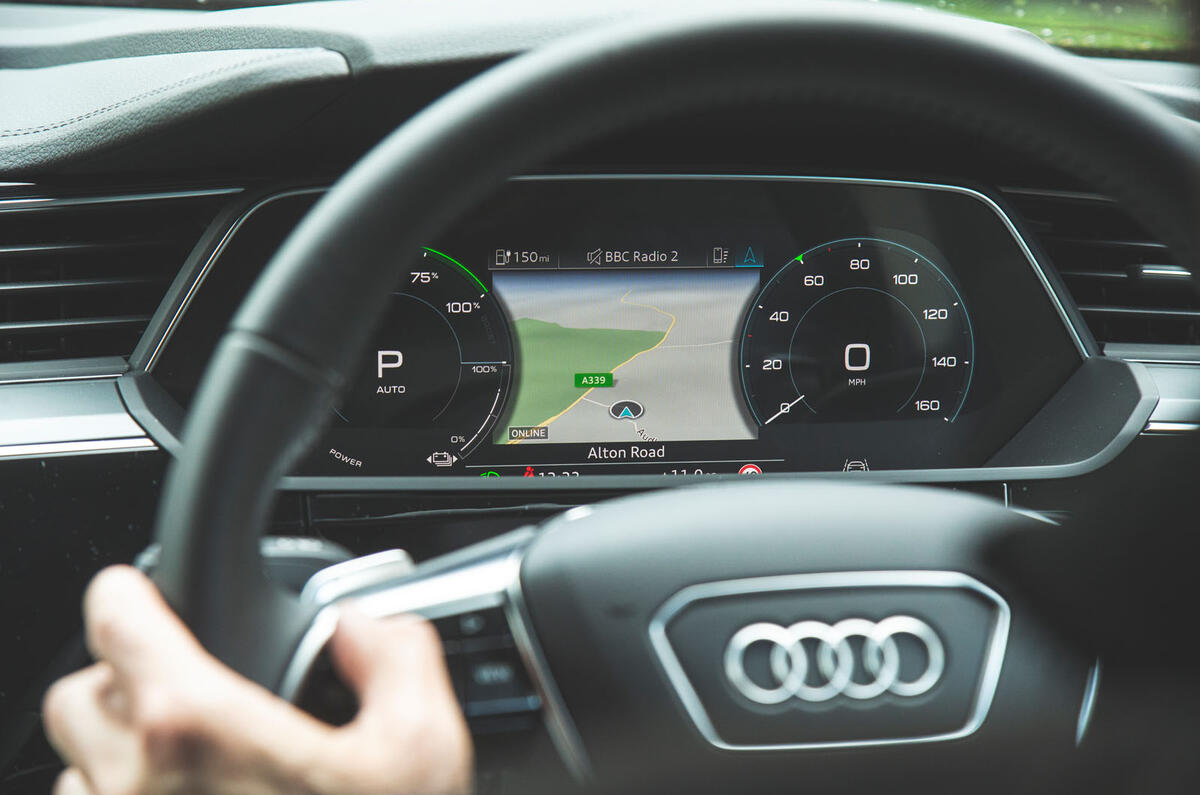
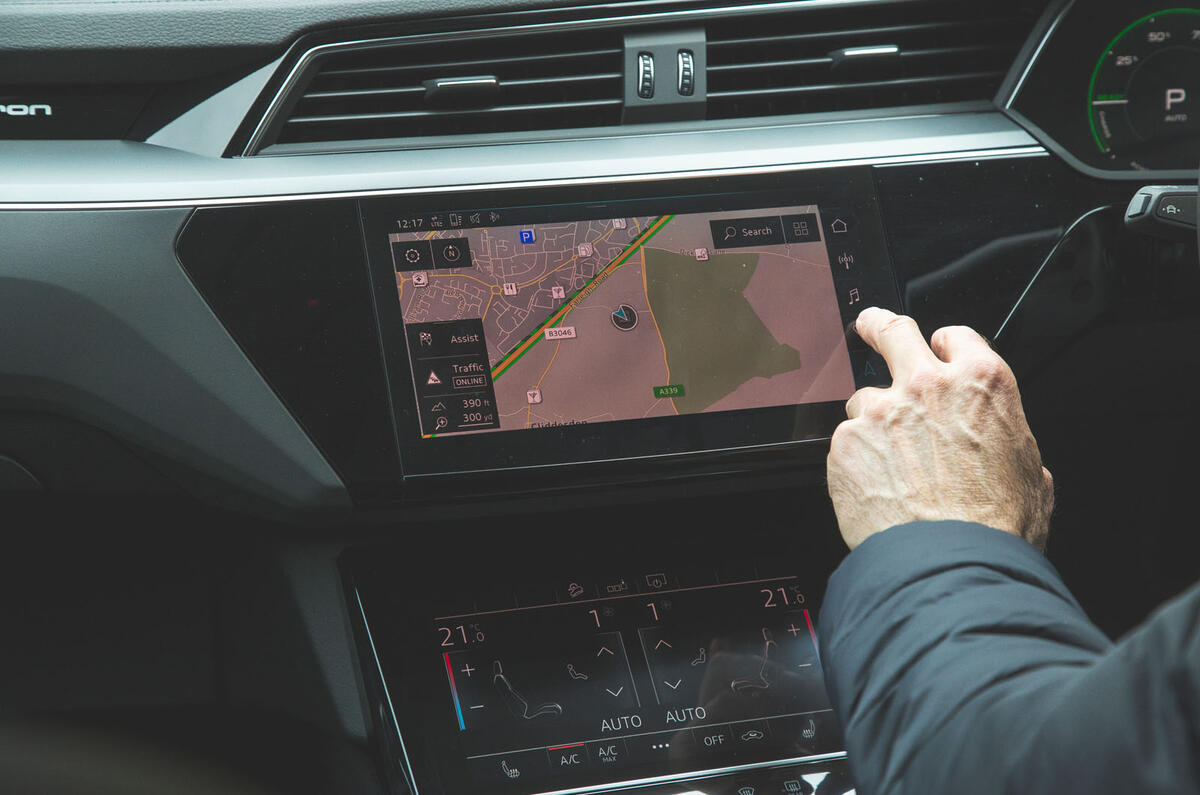
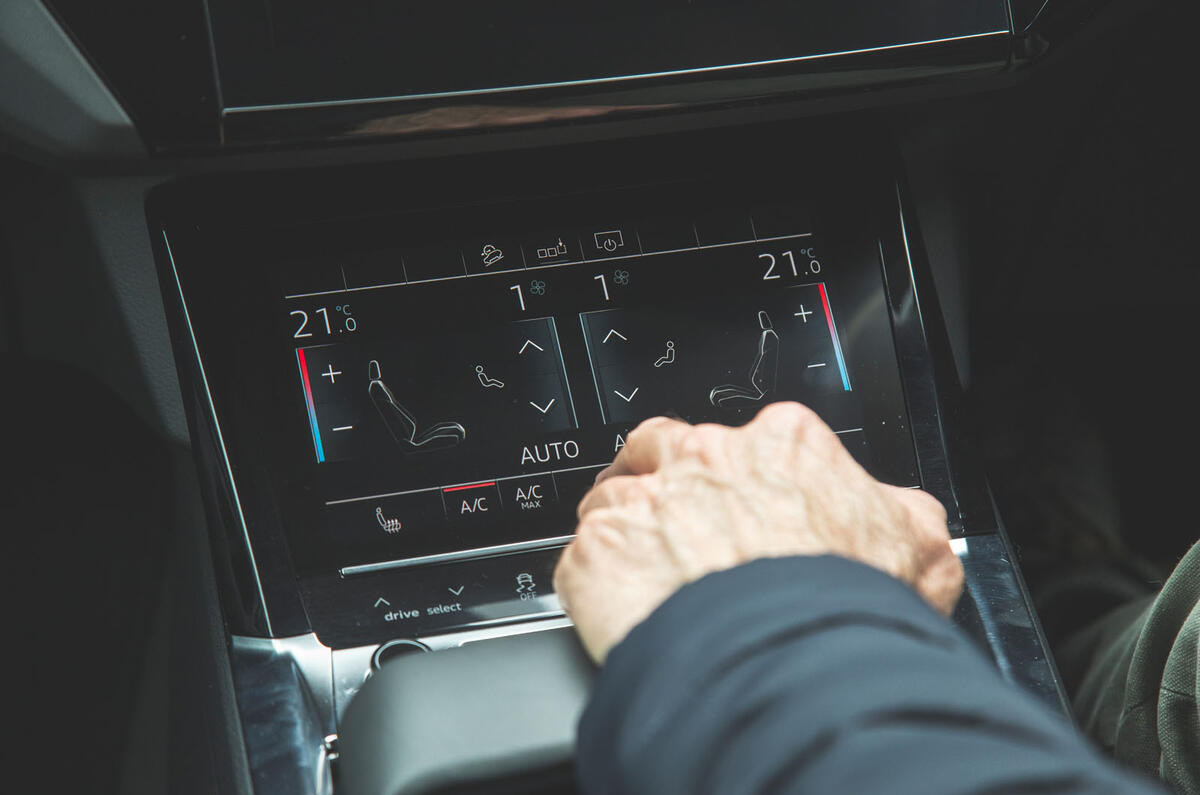
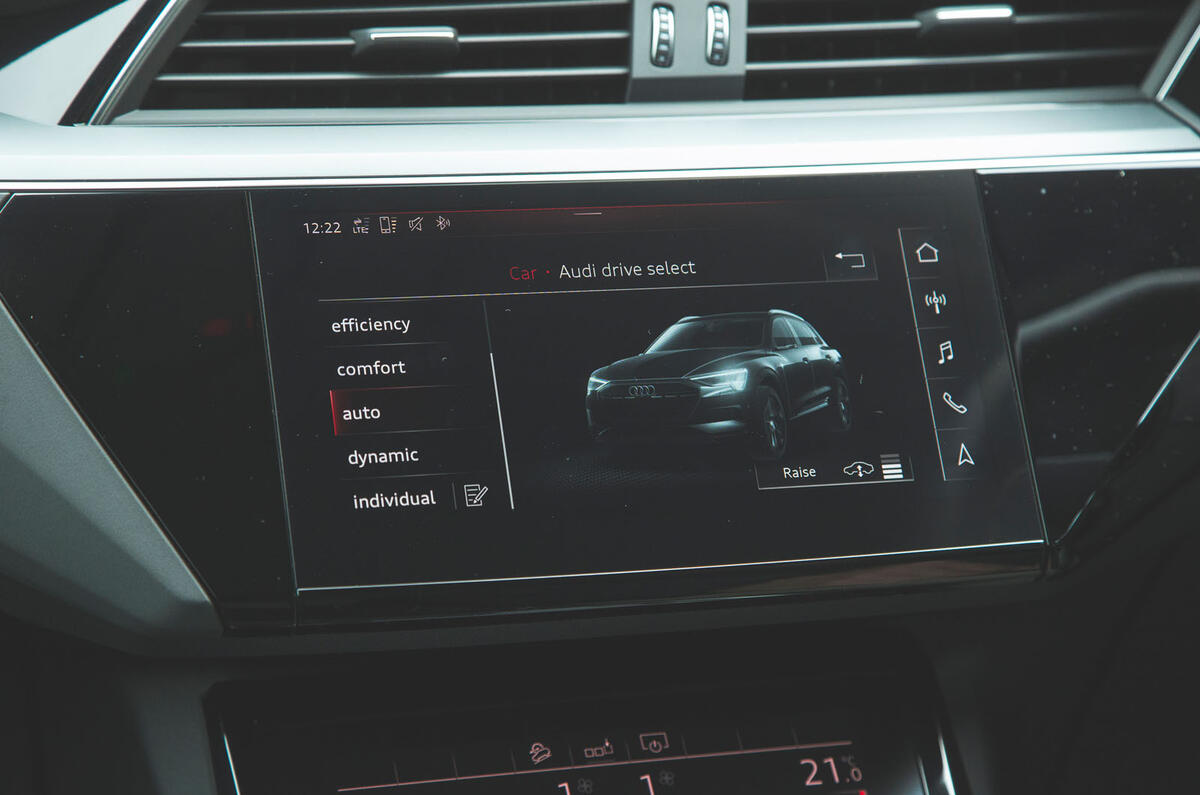
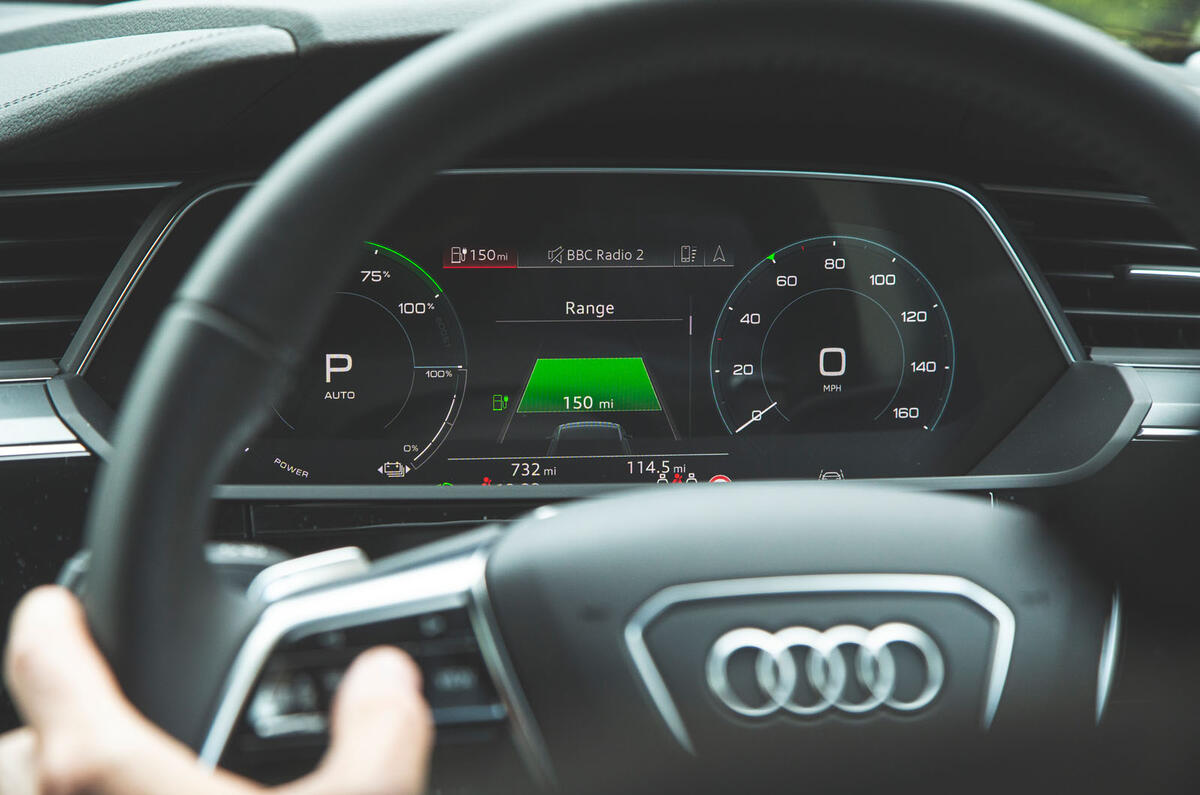


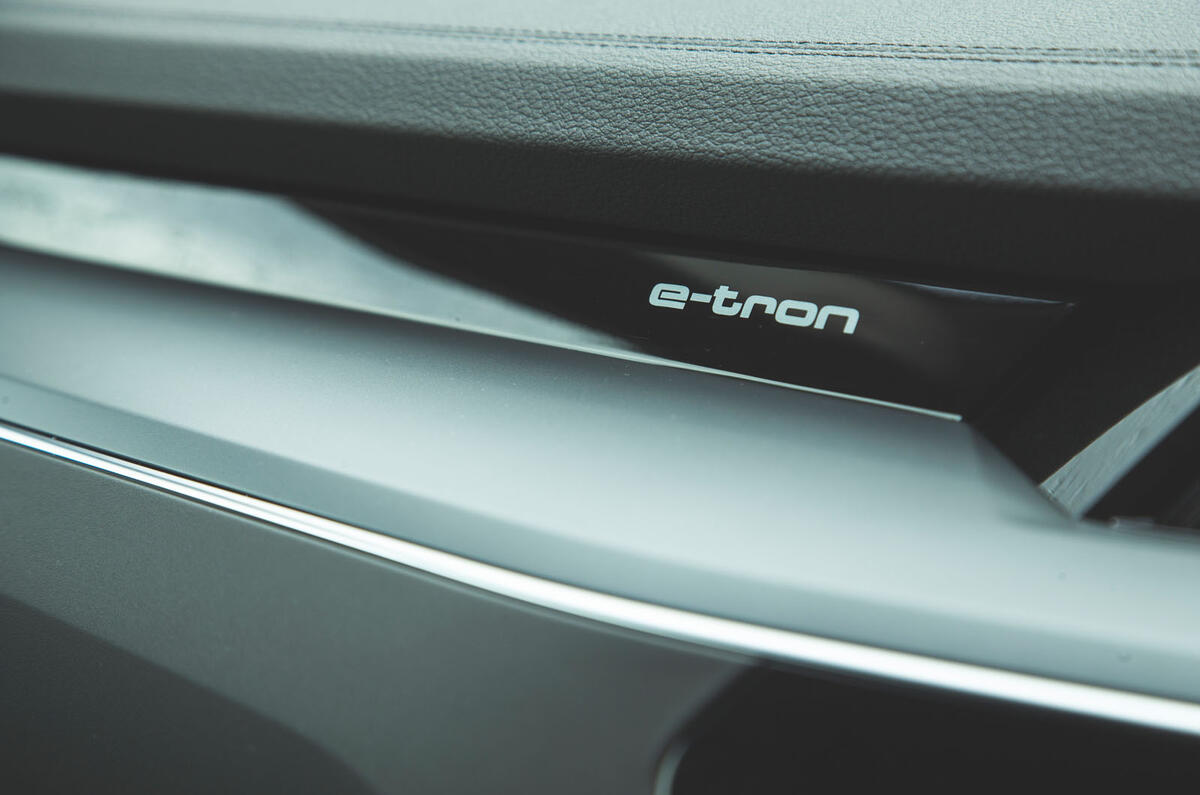
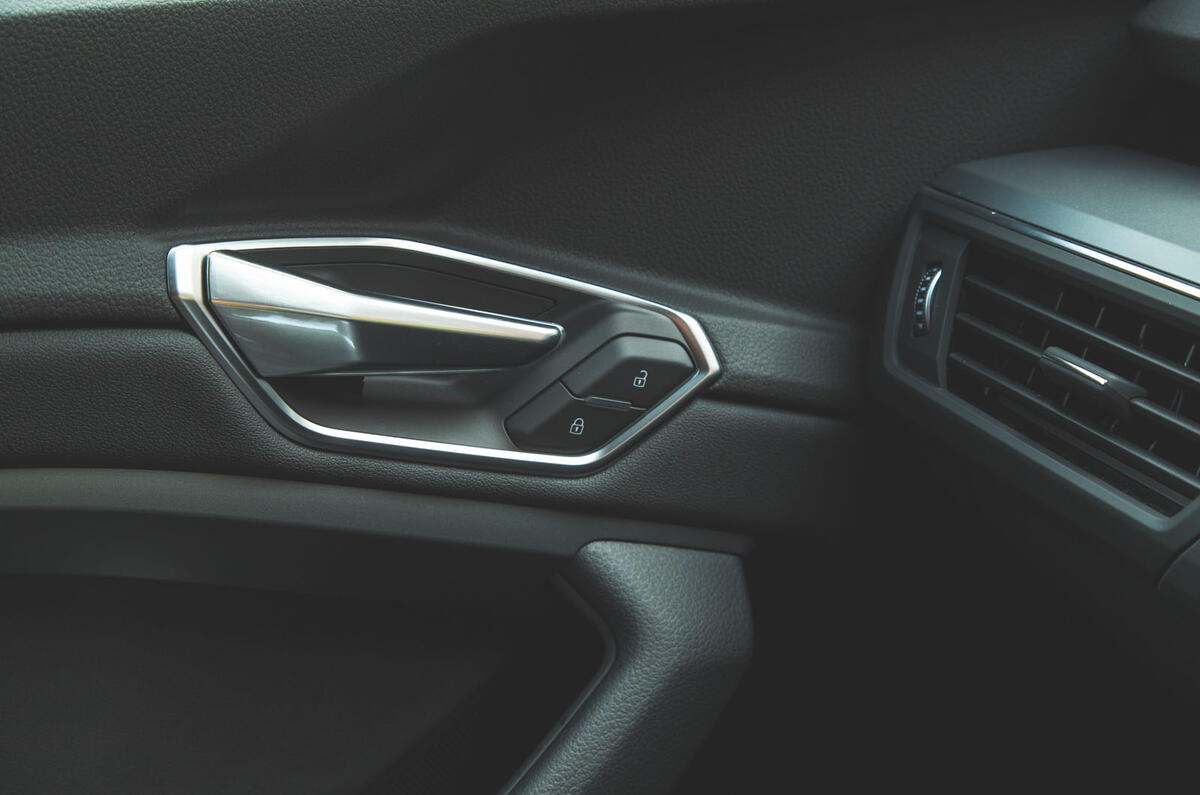
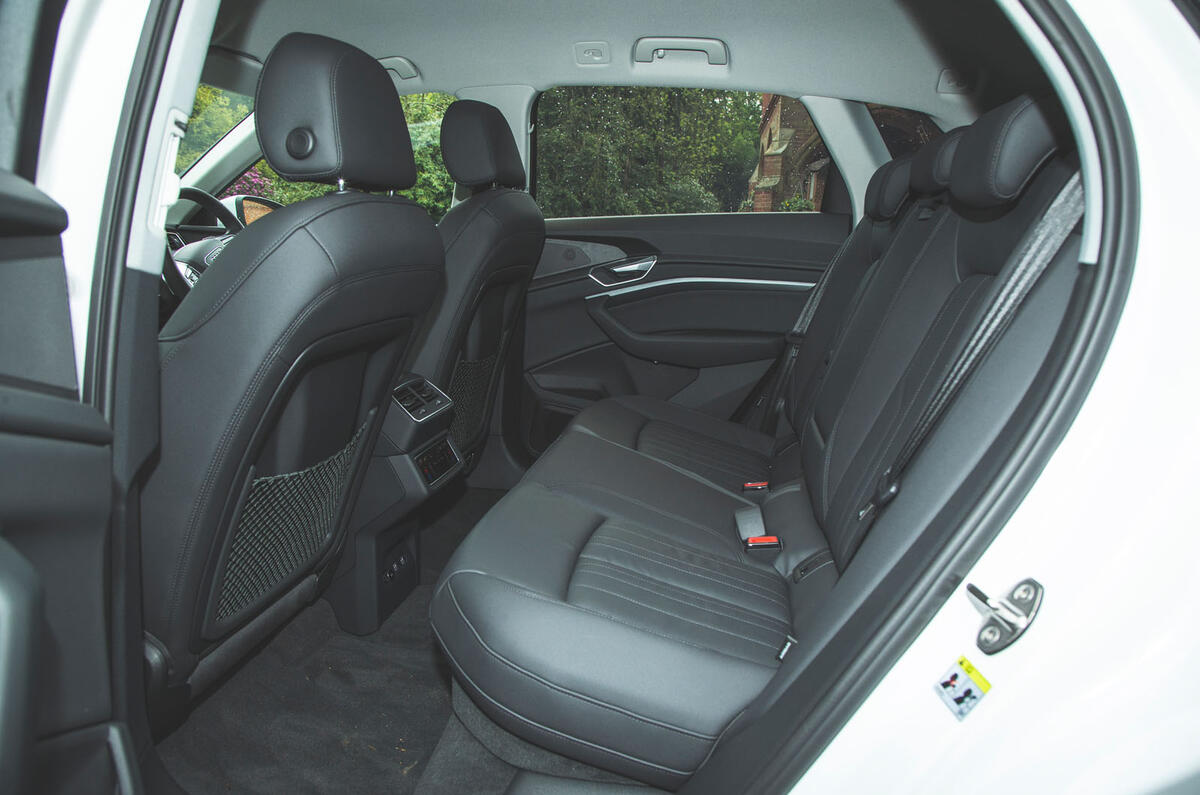

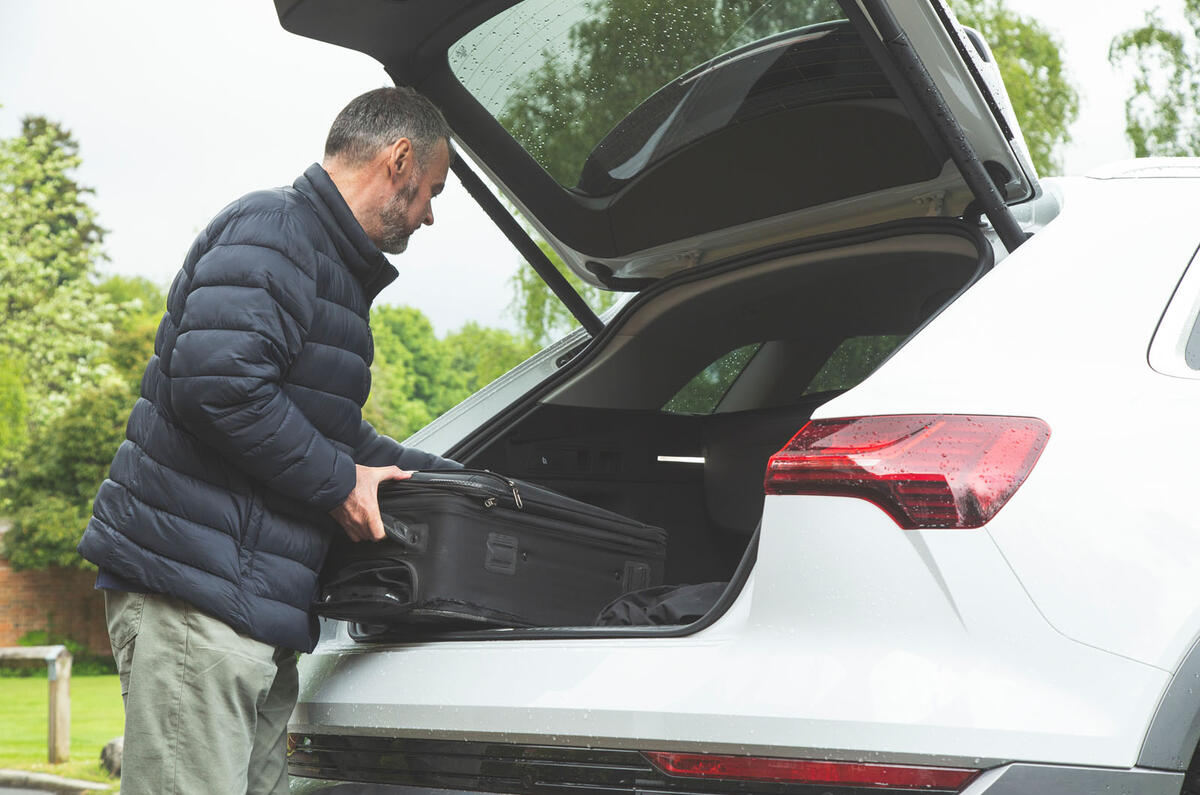
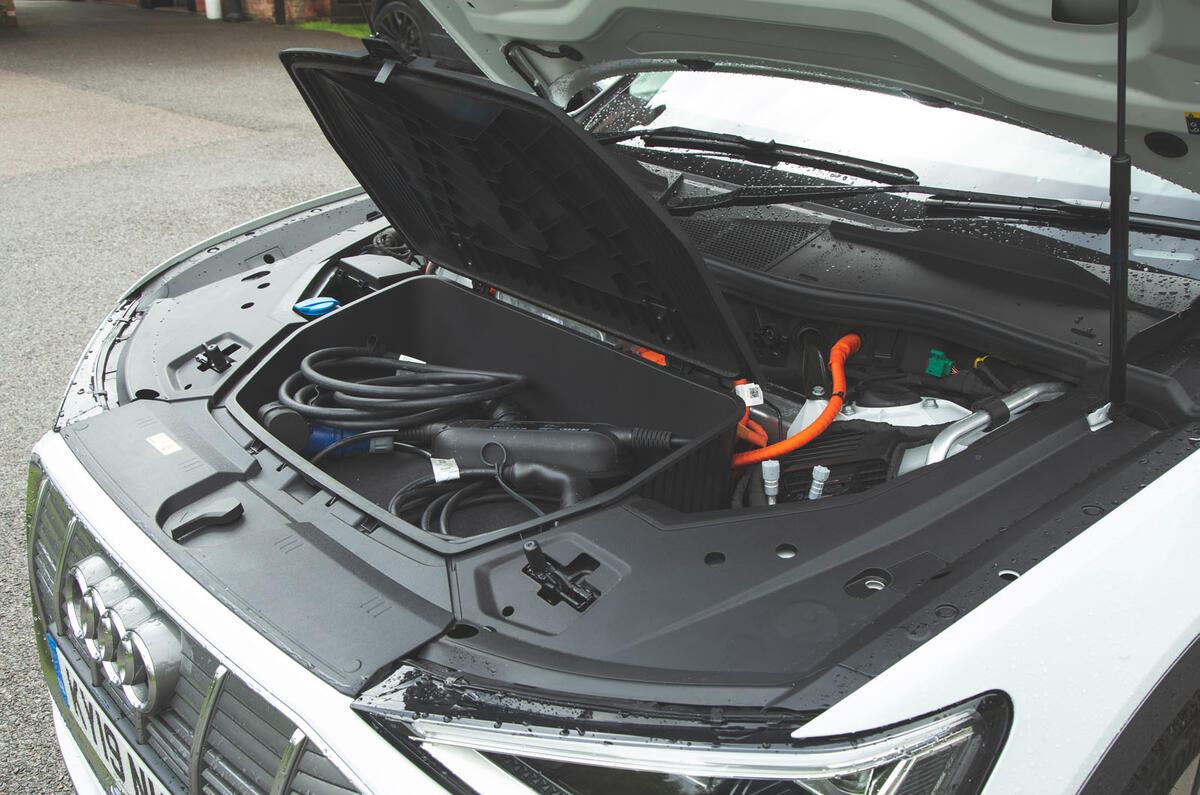
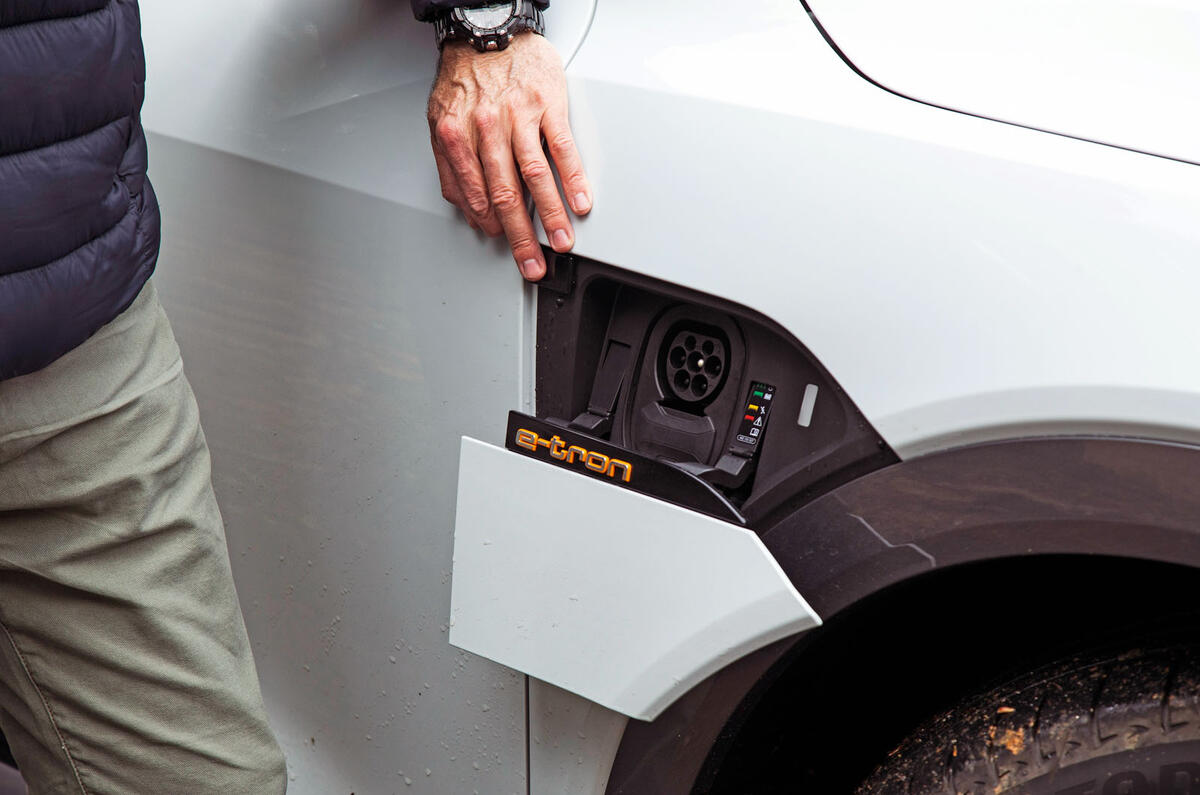
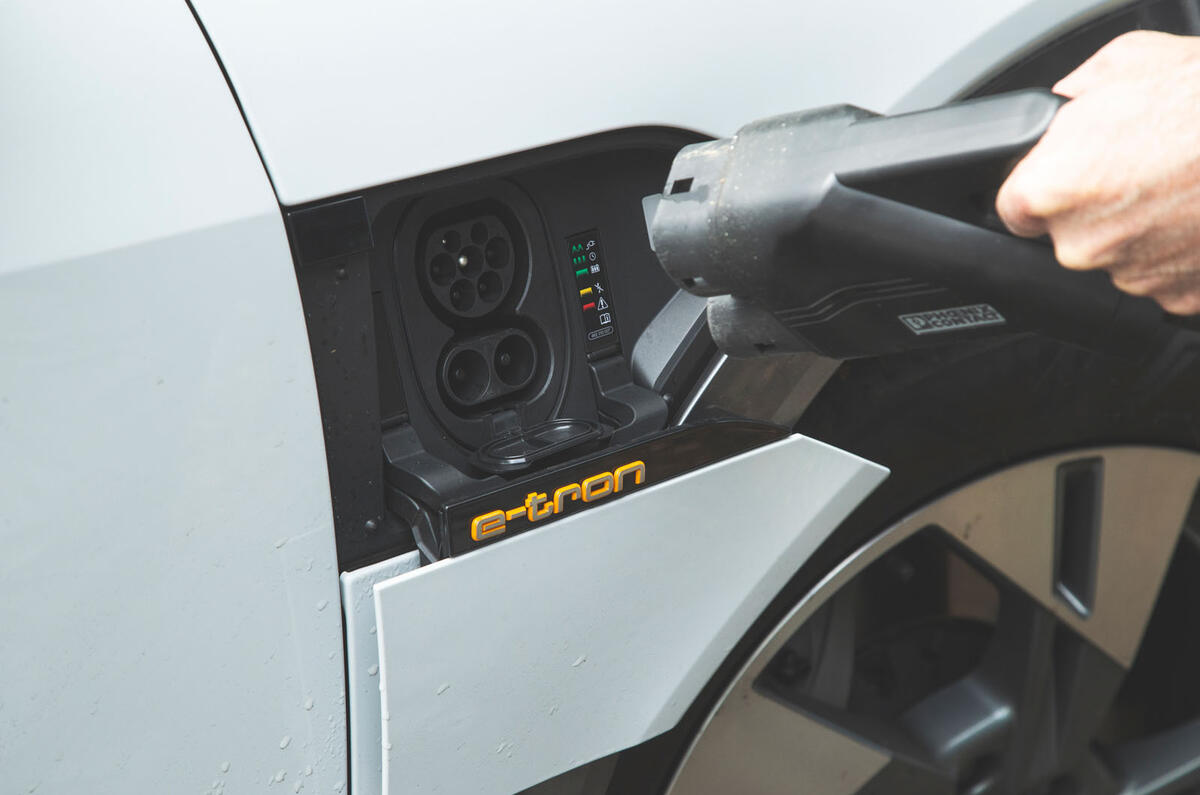

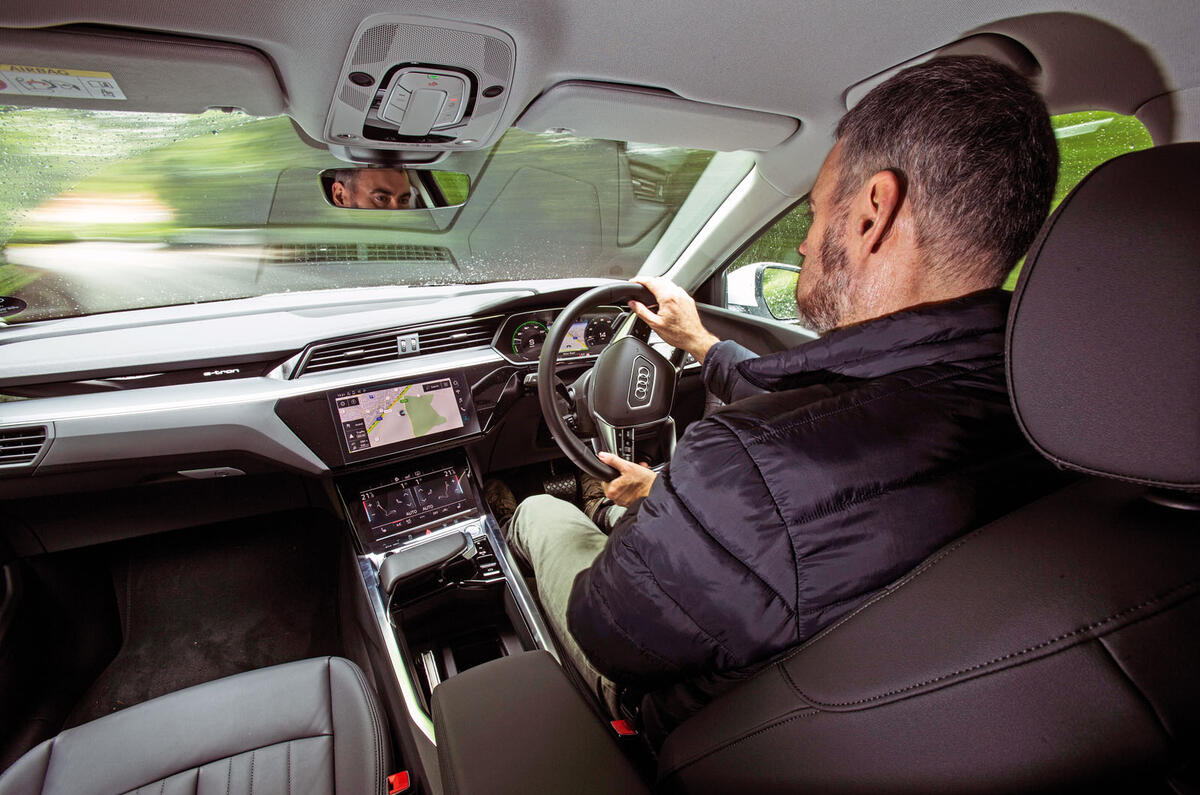
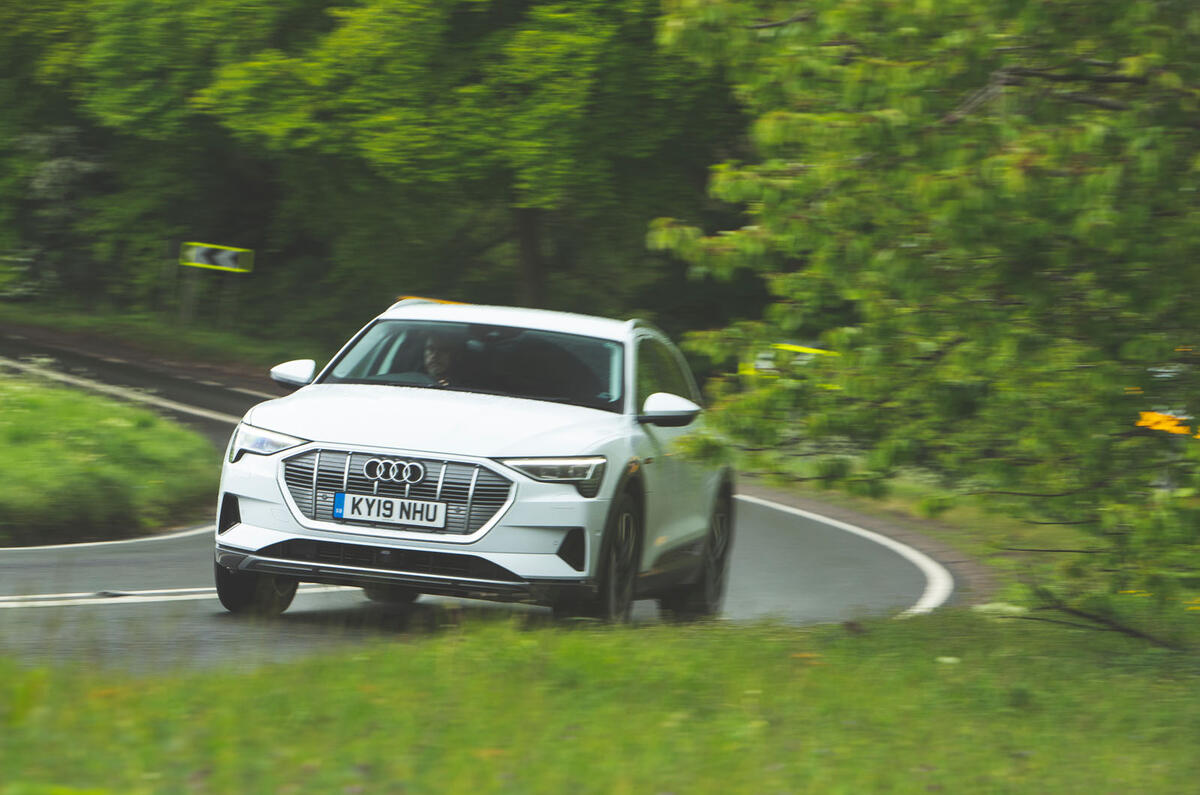
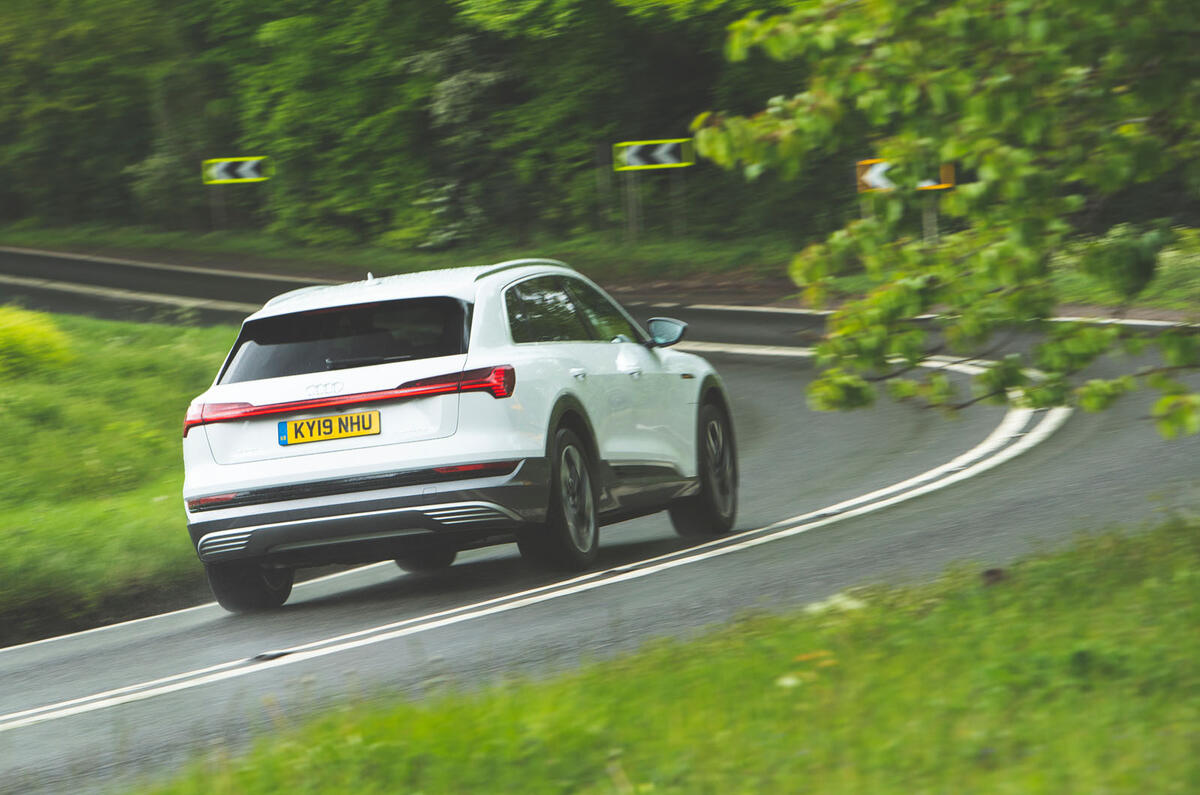
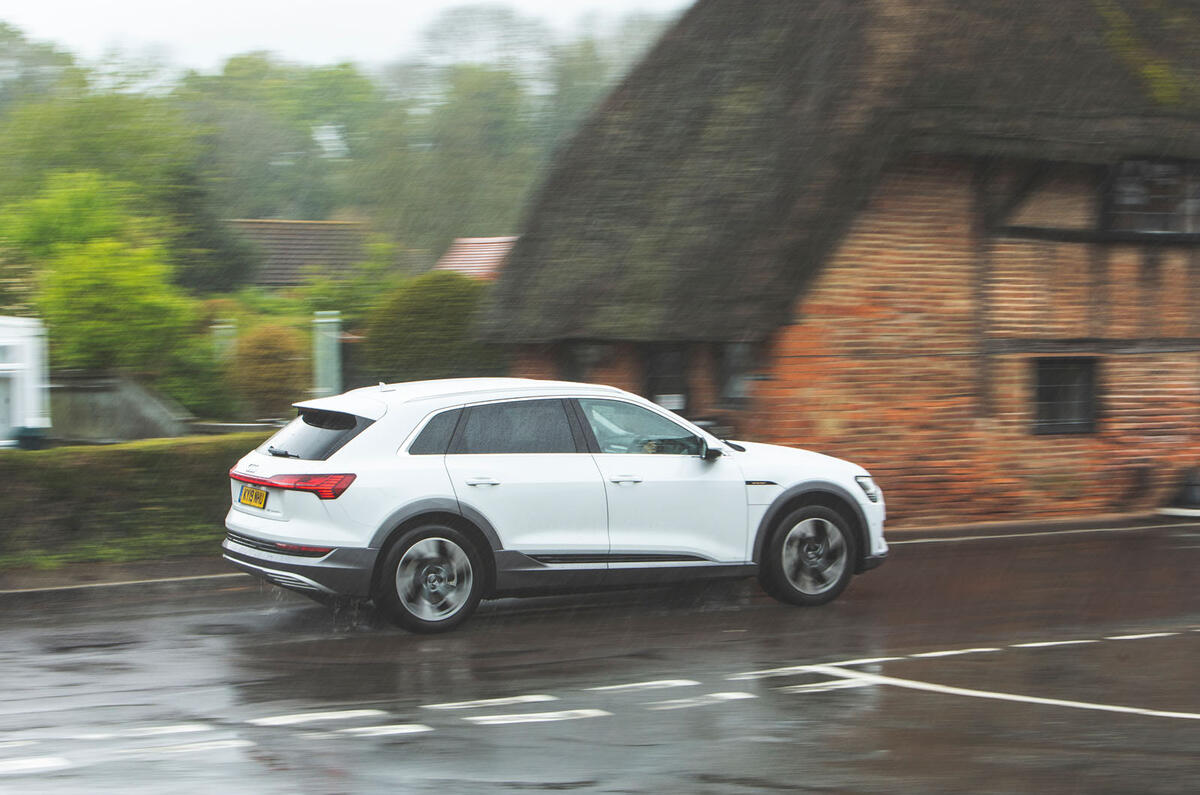
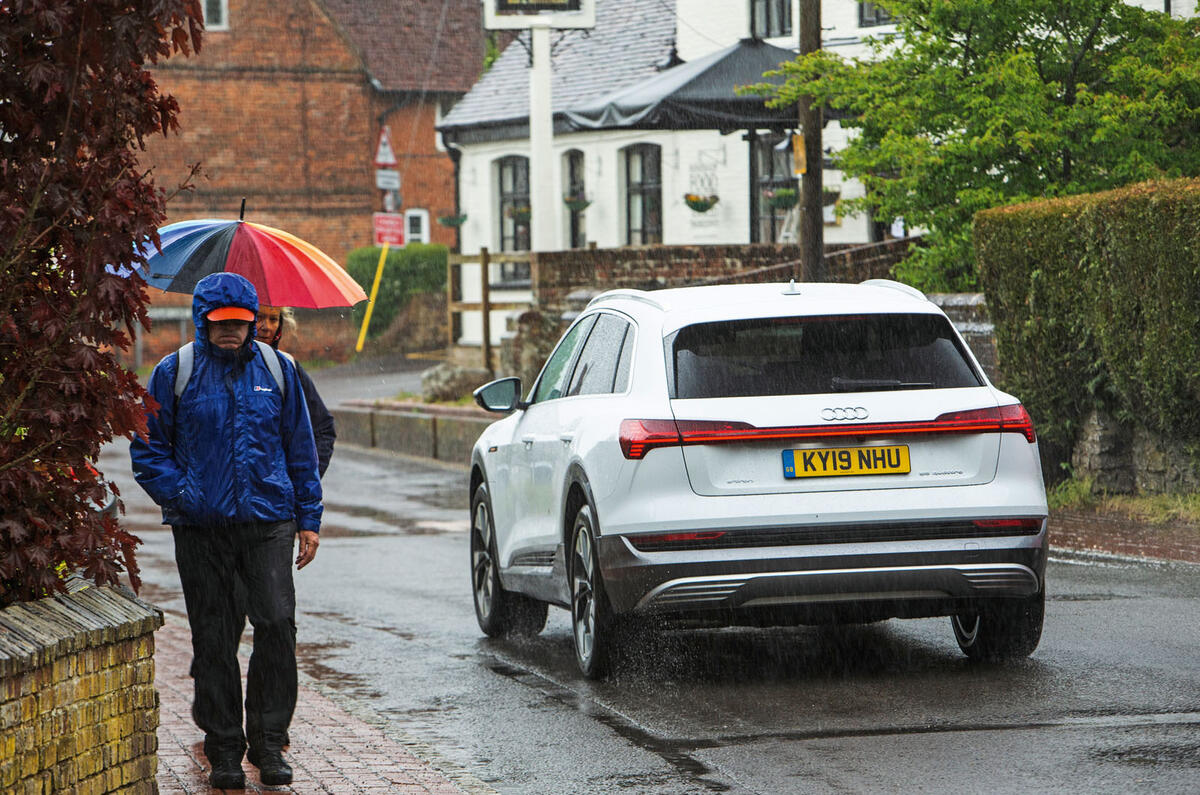

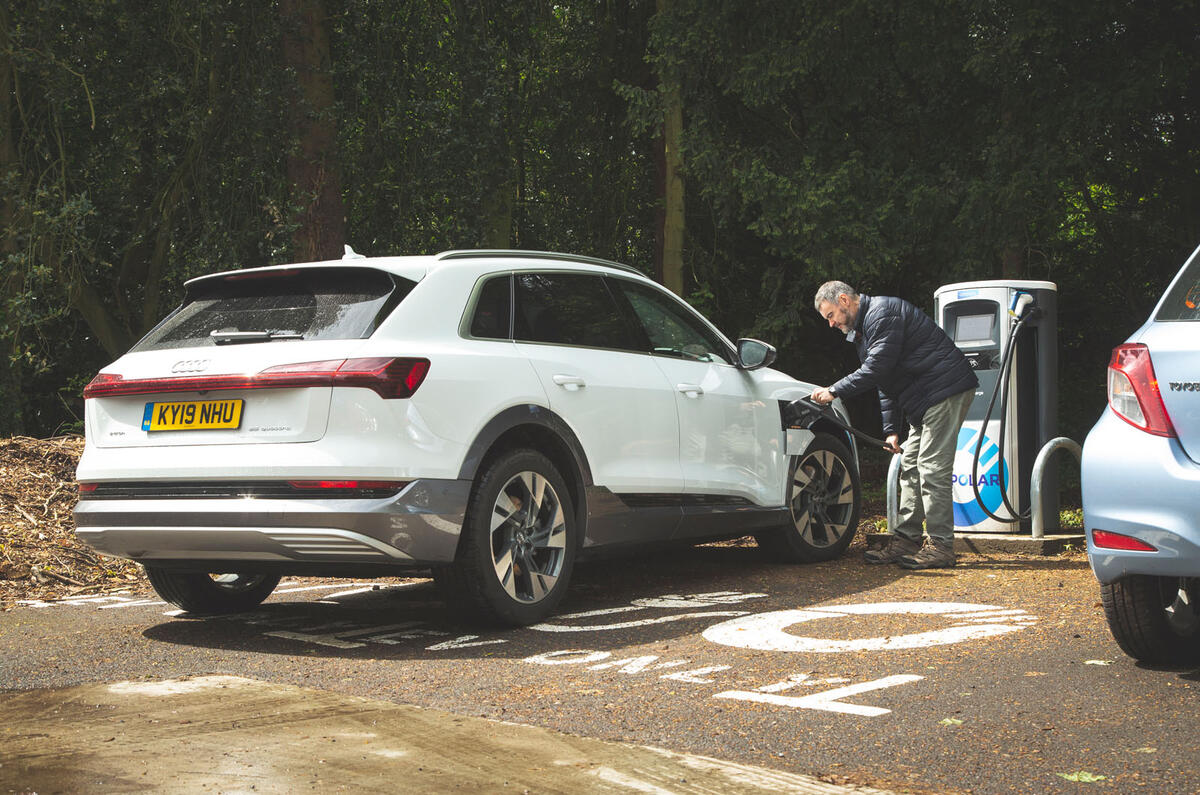
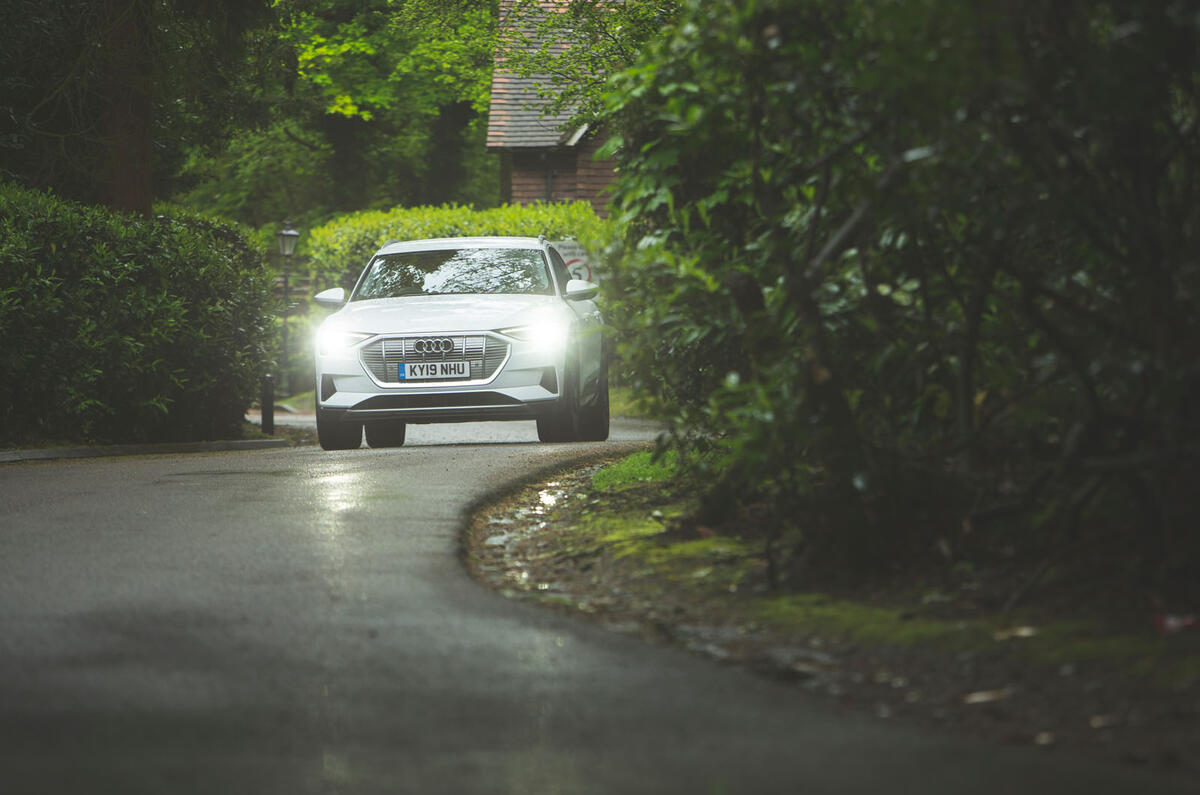
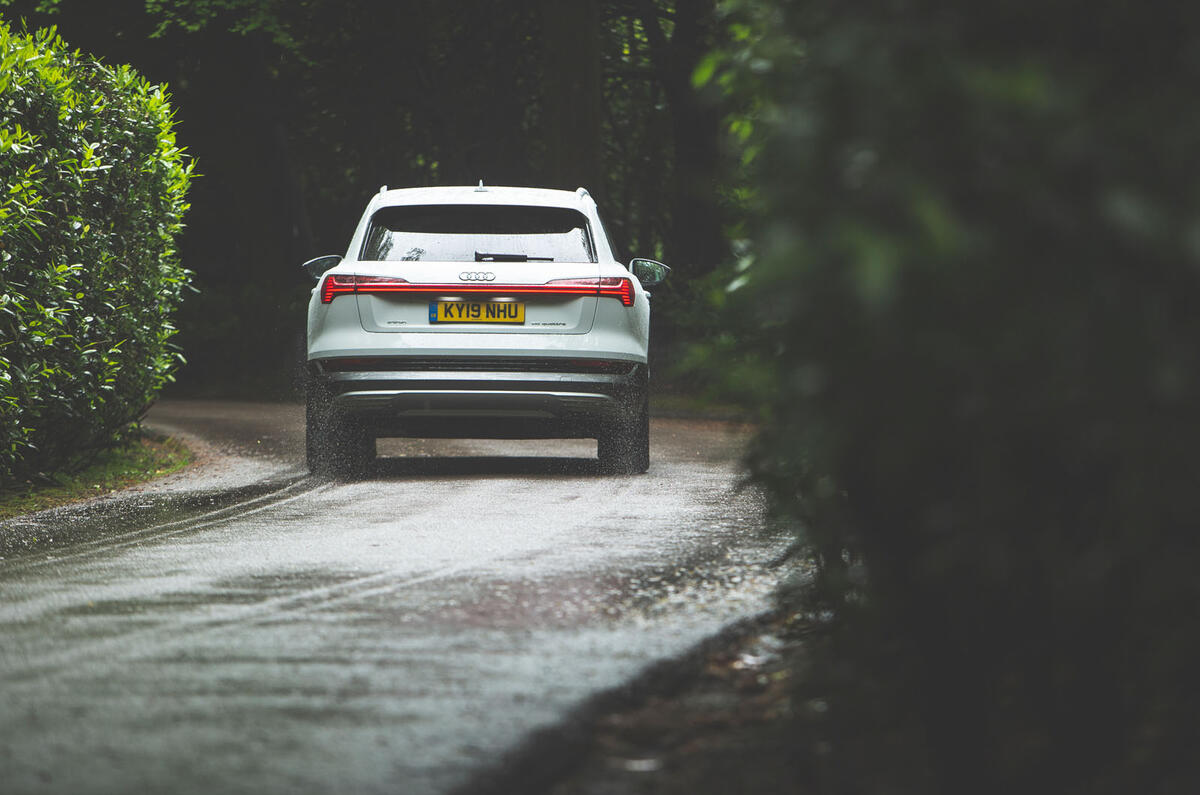
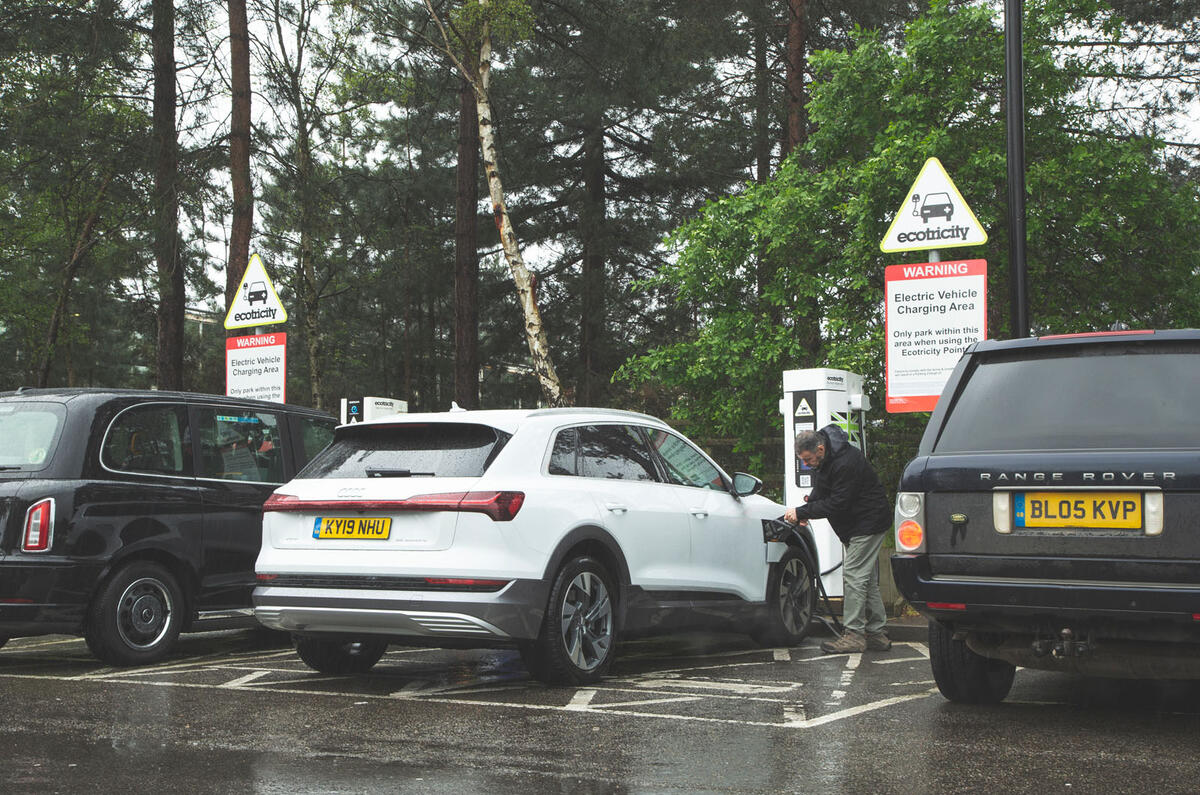
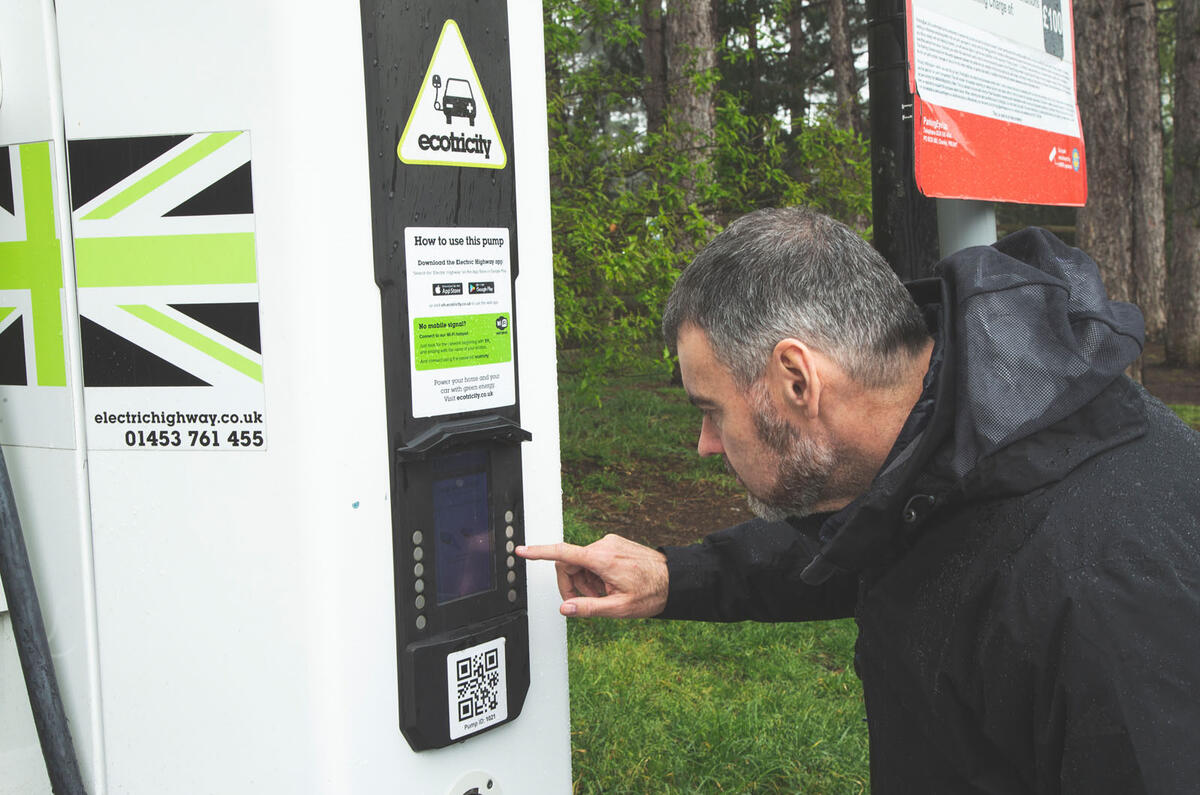
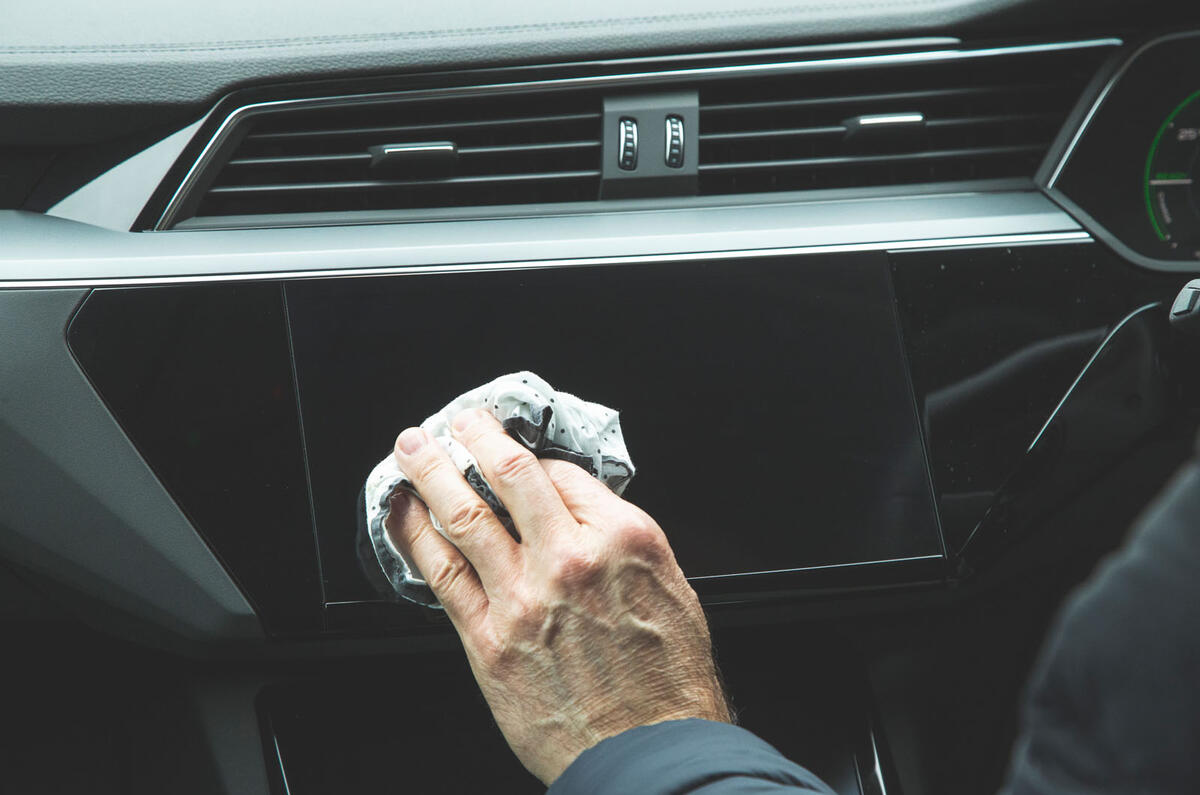
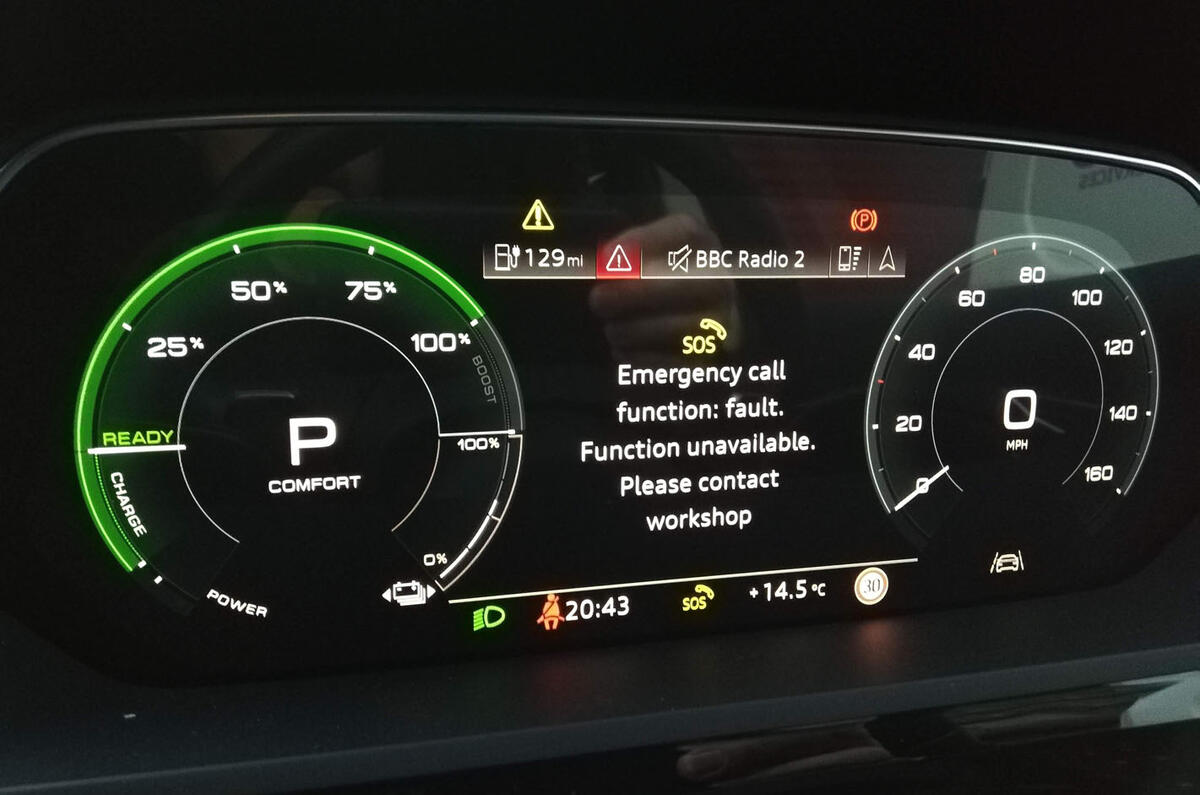
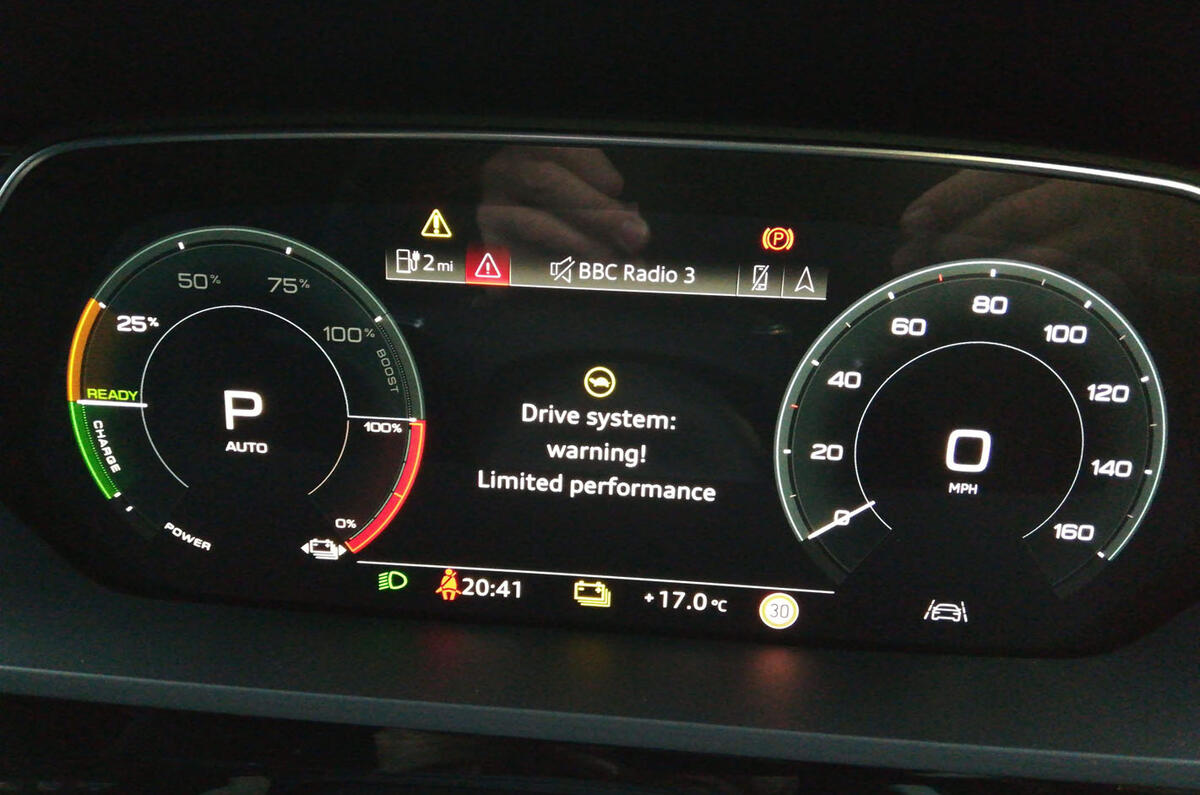





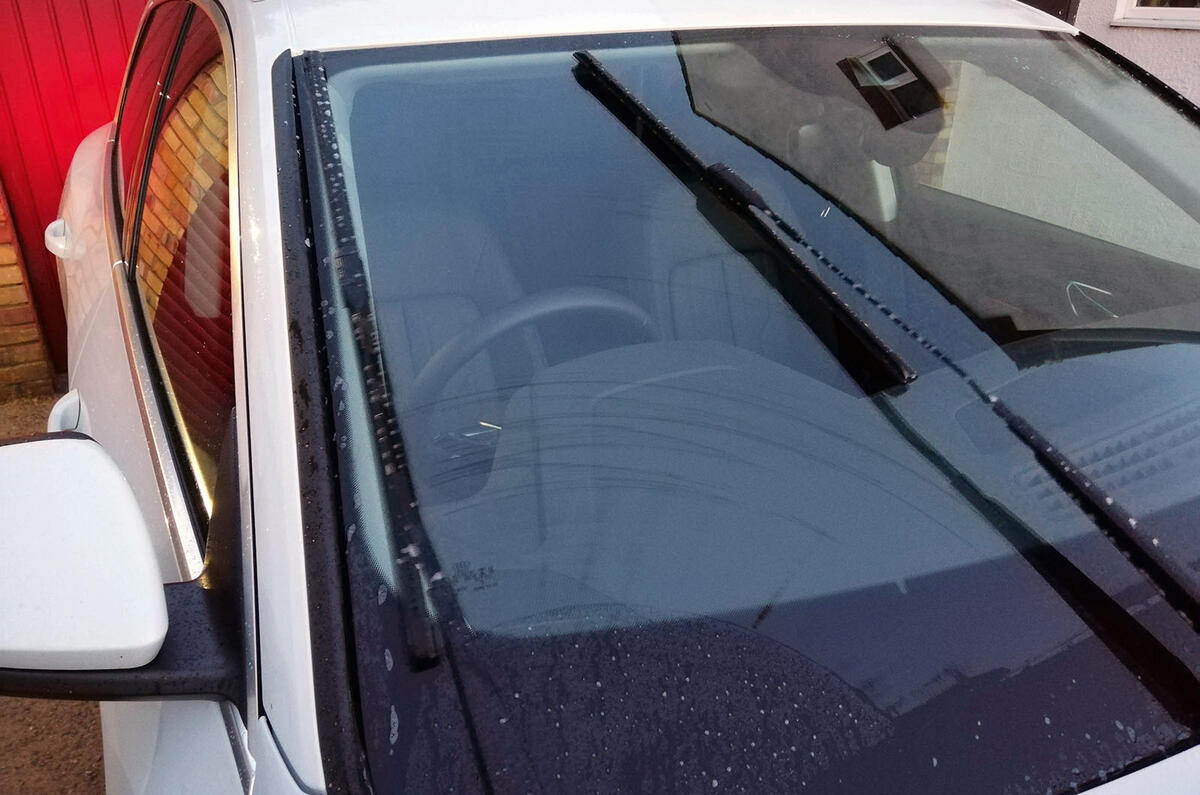
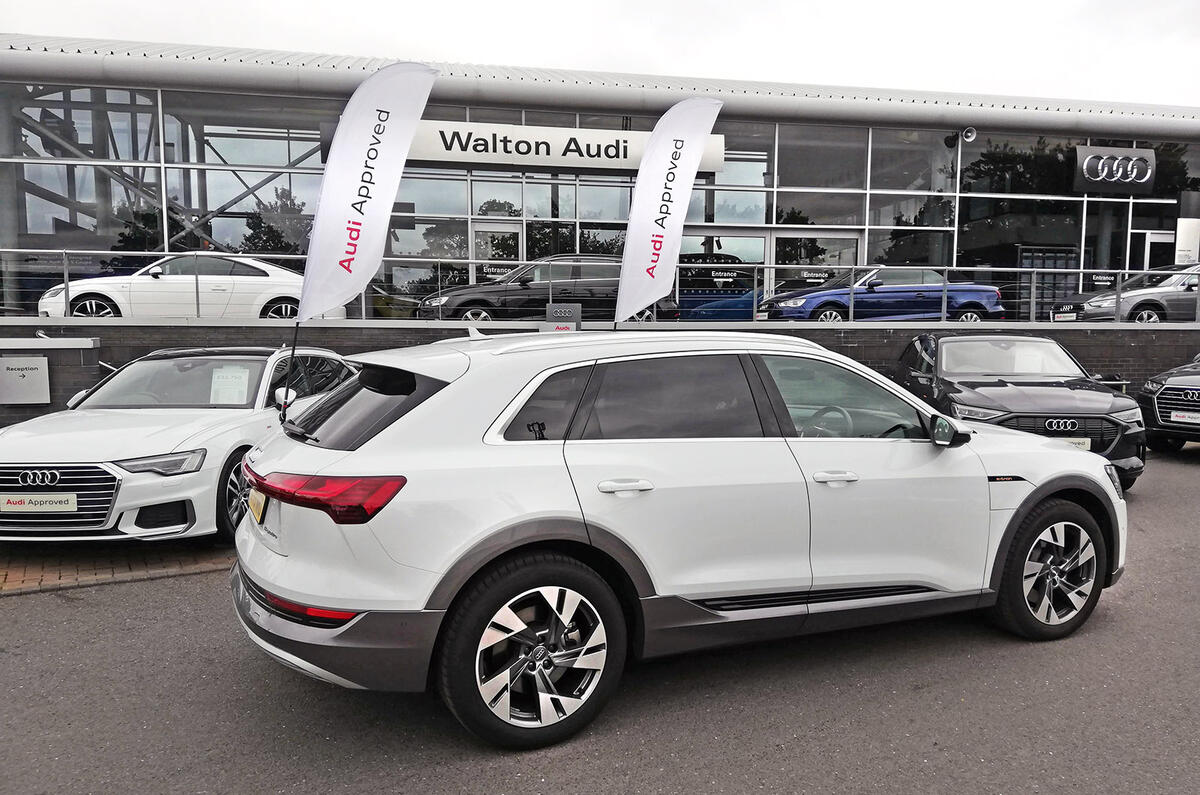
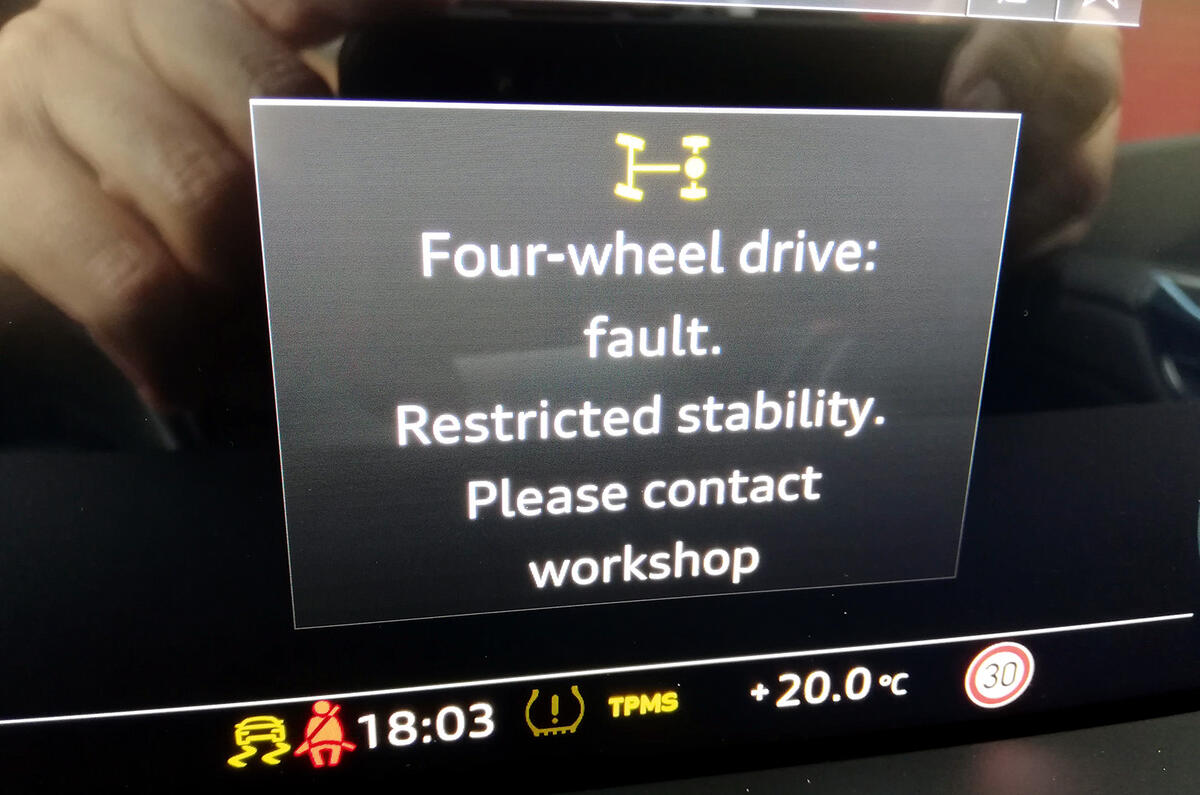
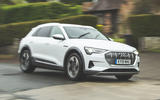


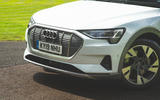
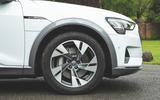
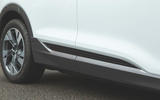
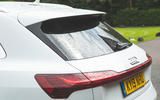
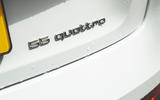
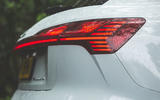
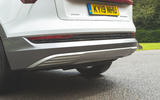

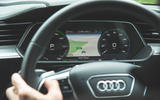
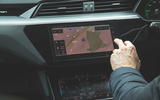


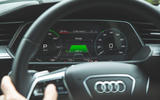


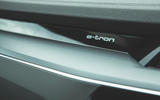
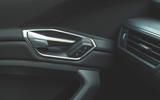

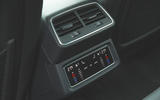

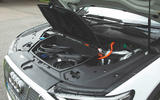
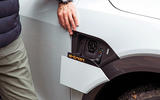
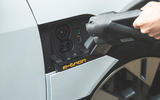




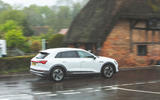


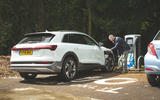
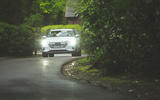


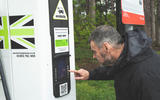


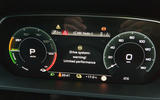
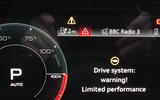



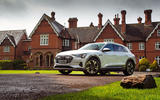


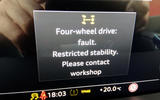


Join the debate
Add your comment
Gives wishes
I have much information about the car but don't enough for me. Before your article reading, I gain a lot of information from your article. So I say best wishes to you.
The usual suspects.
Unreliable and 2.5 tonnes no doubt if this was an ordinary customer they would have been told some other story. Instead of biting the bullet and getting the basics correct to get a reliable car VAG are already out for the options list...Here we go.."Surprisingly, you have to add the £1950 Tour Pack (which we’ve done) to get extra driver aids such as adaptive cruise control, lane-keeping assistance, traffic sign recognition and other collision avoidance systems. Our car has conventional door mirrors rather than the optional camera-based alternatives (sadly) and differs slightly from UK spec in that it has, as individual options, an advanced key for high-security keyless entry (normally part of the £1895 Comfort and Sound Pack) and super-clear Audi Beam LED puddle lights (otherwise available on the Launch Edition only)" The usual me-and-the-local-machanic-story from VAG. Same lack of R&D as per usual.
I see it's unreliable
As usual with VAG products it is designed to fail except this time within 3 months... No wonder VAG relaibility is poor,,
You think that's bad
You should see BMW's